Log in or Sign up
You are using an out of date browser. It may not display this or other websites correctly. You should upgrade or use an alternative browser .

How many field trips do you go on per year?
Discussion in ' Elementary Education ' started by TeacherShelly , Aug 2, 2009 .
TeacherShelly Aficionado
Aug 2, 2009
I've found so many great field trips for local history - that's our social studies unit this year. Plus I want to do a get-to-know-you trip and a big simulation trip. - September - Camping overnight - Spread throughout the year for Social Studies: - Three different local historical museum field trips - Science (insects) in-class field trip - Three art center field trips - May - Pioneer Simulation Overnight (or two) That's NINE field trips in ten months. How many/what kind do you take?

Advertisement
msmullenjr Devotee
none.
WindyCityGal606 Enthusiast
We're allowed 2 but we usually sneak in 4.
scmom Enthusiast
Wow - I have never heard of a class going on that many trips. Here they are lucky for 1 or 2 and in this budget cycle there won't be any money for transportation, etc. Are you in a private school? We would never have the money for that and we are discouraged from asking parents for too much money. I might have done an overnight early in my career, but I am older and risk adverse. Too much to lose...
TXTCHR29 Cohort
We are allowed 1 field trip a year.
I'm in a public lottery school where we do a lot of project based learning. Hands-on field work is encouraged. They don't tell us a certain number of trips are allowed. I do ask the parents for money. I try to have the trips all scheduled by Back to School Night so I can get checks and have all the permission slips signed on the spot. The parents also do the driving and chaperone the trips. Oh, and we walk to the Art Center. I also get classroom money from the PTA which I use if any students can't pay. The trips, except for the overnights, are between $2 - $7 per kid. One is free. I'm sorry to hear all the limits (esp. none!).
Missy99 Connoisseur
One. Sad, when I consider that when my son was in elementary school, his class went on four or five field trips each year.
smurfette Habitué
With my 5th graders, we took 2 or 3 real trips, and then maybe 2 to the middle school to see concerts and tour the school. It's funny that this thread came up now, because just today I was trying to plan our trips for this year's bunch of 4th graders. I was thinking of trying to plan 2 definite cheap ones that we can take on school buses, and then a third bigger one, contingent on whether or not we can get a grant.
lteach2 Cohort
Aug 3, 2009
1 or 2. We have 1 required field trip where we have to take a community walk. Usually we try to get 1 other in that is science related.
wcvetwife Rookie
I teach K and we try to take as many as possible though they are all local and don't cost very much. Last year during testing when we had to be so quiet for the other grades, we took community helper field trips. We toured the hospital and nursing home, police station/city hall, courthouse, and the local library helped us make a day of activities there. The children brought sack lunches and it only cost like $3 per child to pay for the bus.
knitter63 Groupie
The only field trips we take now are the required trips for our science program. (2). They are working field trips, not just pleasure field trips. Our district no longer provides free field trips, so if we plan one, we have to have the students pay for the trip.
KinderCowgirl Phenom
We plan one per month (every grade level in our school is required to). The students are required to pay for the buses plus whatever entrance fee; it hard to collect with the economy and everything - twice last year we brought the field trip to us and had a puppet show and interactive theater come to our school stage, that way no bus fee. I wish we didn't have to go on so many, I just think it gets so expensive for these parents who have 3 or more kids at our school.
MrsC Multitudinous
Usually one per term (3 per year). However, we do need to be very aware of how much money we are asking parents for (limit of about $75/year), so if we have in-school performances, etc. we may need to cut back on out-of-school trips.
GoldenPoppy Habitué
I plan at least 1 trip per month. We have a field trip fee that the parents are charged, but I am often over that and my director has never said no. The last two years I have even asked parents to contribute another $50 for an especially big trip at the end of the year and they have all agreed. This year's class (some of the parents) are already talking about another "special" trip at the beginning of the year that I would like to do.
Teacher Chele Habitué
We are only allowed to do 2 unless the county approves an extra one (usually a play at the local university-very good!!!). I wish we could do more, but I understand that money is an issue.
AMK Aficionado
Last year we only did 2, we usually try and do 3. The cost of busing has gone up so it is difficult.
Due to the economy, the principal asked us to be extremely cautious about asking parents for money for anything this year and to be very conservative about what we want them to purchase. She is radically cutting field trips or approval of anything that costs money or involves travel. They aren't paying for conferences and don't even want us to go even if we pay for them ourselves because they don't want it to look like the school district has enough money to send people to go to conferences or expensive field trips.
Tasha Phenom
We have 2 official bus field trips, one to the zoo and one to the district's Outdoor Learning Center. We also walk to the fire station, have an egg hunt in the park (behind the school - a 5 minute walk), and sometimes walk to the post office (depends on how the egg hunt falls in the year). We also have bubble day which is at the school but is such a fun day that it might as well be a field - this is the day that grades 3-5 go the wave pool to celebrate their hard work on state testing.
giraffe326 Virtuoso
too many :|:crosseyed No one warned me how exhausting they are as a teacher! We do 2 field trips to our district's learning center that are hands on science stuff. We do a big 5th grade trip based on our school's theme. We go to the symphony. We go to the theater to see a Shakespeare play that goes way over their heads :| We usually go to 'education day' and watch our local A baseball team. It seems like I may be missing one (or even 2). The educational ones are fine- the big 5th grade trip and the baseball game are exhausting. The theater trip is plain annoying because they can't hear and what they do hear they don't understand- yet they have to sit still while dressed up and stay quiet as well. I listed 6 but I still think I forgot something.
What a wide range! I forgot about theatre... I like to take the class to see a play or two. I have not yet taken them to the symphony, but I did go as a parent in my daughter's class. The teachers were exhausted keeping track of the kids in the crowds.
silver rain Comrade
Due to the economy and price of fuel, we will only be allowed 1.
alilisa Habitué
We only get one and it is to the local historical society in town!
kacieann Companion
We have a limit of two, but the standard is one field trip per year.
McKennaL Groupie
We got by with an extra "field trip" by having it: optional, at night, as a family event, paid for by the families (though we were able to get a discount for th students AND family members---IF we could have a minimum commit to coming before hand. SHEEESH!). We went to see the film "Horton hears a Who" after reading it in school first, discussing friendship, having a writing assignment about when someone did something outstanding for ME (SO sad when some kids-who you KNEW had things done for them...at least by mom and dad...couldn't think of anything anyone ever did for them. We would say-after a while and when completely exasperated- did mom or dad ever take care of you when you were ill? Did they ever bring you something to drink when you throat was sore? etc. Brother!) The next day we did a Venn diagram discussing the difference between the book and the movie. We had about 90% attendance.
swansong1 Virtuoso
Due to budget constraints, we can't go on any field trips this year unless we write a grant and receive payment that way. We can't ask parents for any money and we have to pay the bus driver $50 per hour(plus $150 to use the bus). We are not allowed to have any field trips before standardized testing, regardless. P says it takes too much instructional time away.(read :cramming to the test). I do take a free walking field trip to the park with my class at the end of the year. All the parents and families are invited and we play and picnic all day.
minnie Habitué
Our school is very fortunate to be able to still go on fieldtrips. Since I am a kindergarten teacher, I only take local trips where the longest bus ride is 45 minutes. We go to the local firestation and post office. Also, we go to the county fair, the pumpkin patch, the local zoo, oral language festival, the county museum, Greg and Steve concert (children singers, like Dr. Jean), plays that are performed by theatre groups, end of the year good behavior fieldtrip. Parents are always invited, but they have to pay their own way. We are a very small school and we are the only school in our district, so we are very blessed to be able to go!
teacherintexas Maven
We go on one grade level field trip and two school wide field trips.
Ms.Jasztal Maven
A SIMULATION?! And CAMPING?!?!!! Which grade do you teach? I love it! I bet we could never go camping, though. My students and I take 4-6 trips a year. All but one are cheap/free and small. Last December, we went to City Hall to decorate the Christmas tree with Book Buddies in kindergarten. We do this every year, this year included, I'm sure. This past February, we trekked over to the Environmental Center and went on a nature walk by the river. All fourth graders in the county do this. We are doing this again, too, of course. Also in February, we went to the local park as a reward for putting forth diligent effort with the Florida Writes. We had hot dogs and played on the playground for 2-3 hours. In March, 3rd, 4th, and then 5th (on different days) went to the skating rink for exerting great effort on the FCAT math and reading tests. Last, this past May 9th, we headed to St. Augustine, leaving our school at 7:30 a.m. and getting back at 10:45 p.m. It was a 2 1/2 hour trip, and we went to the lighthouse, park across from the lighthouse, the Castillo de San Marcos, and Ripley's Believe it or Not. We also took a trolley tour through the city. It was on a Saturday. For that trip, which I have taken all five years, I have gotten a charter bus and didn't use ANY county funds. In class, though, we go "camping" for the day, but it's at school. It takes place the last week of school or the end of the second to last week. This next year, I'd also love to plan a few community service field trips and perhaps one on a Saturday to the Florida Museum of Natural History in Gainesville, which has free admission. It may work out, it may not, but I am grateful we get to go on field trips. I think they are very much an important part of education and are very memorable for the kids.
jeanie Companion
Aug 5, 2009
Two, but we had to cancel ours last May due to swine flu scare of having children in populated places. argghhh. I wonder what our district will be doing about that when we come back this fall.
Lynn K. Habitué
We don't have any limits, but I only take the kids on 1. We do have 3 other 'on campus' field trips during the year. I used to do more, but I they became too expensive...
Hoot Owl Aficionado
TeacherShelly said: ↑ I've found so many great field trips for local history - that's our social studies unit this year. Plus I want to do a get-to-know-you trip and a big simulation trip. - September - Camping overnight - Spread throughout the year for Social Studies: - Three different local historical museum field trips - Science (insects) in-class field trip - Three art center field trips - May - Pioneer Simulation Overnight (or two) That's NINE field trips in ten months. How many/what kind do you take? Click to expand...
amakaye Enthusiast
One in-county (not that there's much here...), one out-of-county. That policy was put in place by the public school board, and since they let us use their buses we have to follow it. It's frustrating, though, because we've even had grandparents, friends of the school, etc. who have volunteered to pay for fuel and other bus costs so classes can go on more.
mom2ohc Habitué
Aug 6, 2009
we take one trip per year, we do not have busses, so the trips are usually close to 20 dollars, so it is just too expensive.
Ms.T Comrade
I think this year we went to: library - free play - $3 2 factories - $1 each picnic at park - free, potluck bowling - $5 visit pen pals - free farmer's market - free nature area - $3 Parents do pay for the trips - I try to keep it below $5. We don't have to pay for our buses.
For those of you who don't have to pay for buses, where do the funds for the buses come from?
Good question, MrsC. Busses cost a fortune!
TeacherShelly said: ↑ Good question, MrsC. Busses cost a fortune! Click to expand...
MissCeliaB Aficionado
I'll be teaching high school next year, and while we won't have any official "field trips" I may get to go on the gifted field trip to New York, if that gets to happen!
Our school buses are really cheap...can't remember the cost, though. I think it would only cost about 1 or 2 dollars per student. Last year, our principal had some funds set aside for field trips, so the school paid a big part of some of them. We also asked the PTO and applied for grants. For our big trip, the funding was like this: $800 from a grant, $1000 from the principal, $200 from the PTO, and about $800 or 900 from our grade level money (we passed up on buying a lot of supplies and new books this year) to cover the buses. The students only had to pay their entry fee.
DrivingPigeon Phenom
We go on 2. I wish I could go on more. I don't see why we can't, because the ones we do go on are completely free. I work at a school with 6% free and reduced, so I'm pretty sure the parents could fork over $5 for a third field trip. BUT, then my class would be doing something the other K classes weren't doing, and I'm sure that would cause a ruckus...
Share This Page
- No, create an account now.
- Yes, my password is:
- Forgot your password?
Members Online Now

- Cash Rewards Credit Card
- Personal Loan
- Home Mortgage
- Student Loan
- Self-Guided Planning
- Planning with a Financial Professional
- 403(b) Plans
- Traditional & Roth IRAs
- Group Term Life Insurance
- Accidental Death and Dismemberment Insurance
- Guaranteed Issue Life Insurance
- Accident and Injury Insurance
- Disability Income Protection
- Dental and Vision Insurance
- Pet Health Insurance
- Medicare Supplement Insurance
- Auto & Home Insurance
- Renters Insurance
- Discount Marketplace
- Discount Tickets
- Auto Buying
- Wireless Program
- Complimentary Life Insurance
- Student Debt Navigator Tool
- Mental Health App
- Travel Rewards
- Job Layoff Assistance
- Disaster Relief Assistance
- Family & Wellness
- Life Insurance Protection
- Living in Retirement
- Paying for College
- Personal Finance
- Retirement Learning Center
- Shopping Discounts
- Student Loan Debt
- Travel & Vacations
Get Started
Create an account to get started, or if you already have an account, sign in below
How Field Trips Boost Students’ Lifelong Success
Educational trips contribute to better student outcomes in school and beyond. maximize the impact of field trips on students with these 9 ideas..

by NEA Member Benefits
Here’s why field trips are important
The study found that regardless of gender, ethnicity or socioeconomic status, children who take school trips have better grades (59%), higher graduation rates from high school (95%) and college (63%) and greater income (12% higher annually).
In fact, 89% said educational trips had a positive, lasting impact on their education and career because enriching field trips made them more engaged, intellectually curious, and interested in and out of school.
“When I was growing up, my parents said the 3 Rs (reading, writing and arithmetic) were important,” says Roger Dow, president and CEO of the U.S. Travel Association. “But for my kids, I made ‘roaming’ the fourth R. We live in a global society, and if you don’t see outside the neighborhood you grow up in, the world will pass you by. Traveling has opened my kids’ eyes. It’s made them more confident and inspired them to reach outside their normal environment to learn and obtain skills to bring them to the next level.”
More benefits of school trips
Margy Natalie, acting onsite learning manager at the Smithsonian Institution’s National Air and Space Museum , notes the powerful effect school trips can have on student learning: “Field trips give students the opportunity to learn in a natural environment and experience things first-hand and from primary resources, rather than texts; real objects rather than photos.”
Carylann Assante, executive director for Student & Youth Travel Association (SYTA) and SYTA Youth Foundation , seconds the notion that real world exploration outside the classroom can bolster students’ critical thinking skills. “Today’s students are visual learners, and a field trip lets them touch, feel and listen to what they’re learning about, which helps them build on classroom instruction, gain a better understanding of topics, build cultural understanding and tolerance, and expose them to worlds outside their own.”
Assante says field trips are particularly important for disadvantaged students, as they provide students with unique opportunities that level the playing field. “Field trips give diverse and financially-in-need students equal opportunity to experience things outside classroom that their families may not be able to afford,” she says.
A field trip can also be the first trip a student takes without their parents, so it builds independence, as well. “There’s a reason people say I need to get away and recharge my batteries. There’s truth to it,” Dow says. “If I was a school system looking at these stats, I couldn’t afford not to make this a part of our curriculum.”
Tips for planning a successful field trip
You’ve decided to plan an educational field trip for your class, whether it’s to an art museum, science museum, historic site, aquarium, planetarium or some other immersive, interactive learning environment. Now, you need to know what steps to take to ensure a successful field trip. Keep these expert tips in mind:
1. Look around your region for interesting day trips
Dow suggests a planned field trip so you and your class can easily explore an aspect of local history on a day trip. “You can take a quick drive and see the history of places around you—there’s tons of inexpensive things teachers can do that will have a phenomenal impact,” he says.
2. Do your homework
Ideally, you could scope out the destination in advance to ensure the field trip will produce your desired learning experience. “Plan carefully, do your research, visit the site before you plan, ask questions and take recommendations of staff,” Natalie suggests.
3. Follow protocol
“Teachers need to review their school’s policies on field trips in advance and prepare the forms with specific learning objectives and how the field trip will accomplish those objectives tied to their school's core curriculum,” Assante says. Most museums, attractions and locations have education materials to explain how their attraction supports teacher lesson plans and educational curriculums.
4. Involve your students in the preparation
Prepare your class for their upcoming school field trip by getting them interested and excited about what their experience may be like. “Discuss the goals of the field trip in advance, talk about what they will see and what they should learn,” Natalie says.
Consider letting the class pick the field trip destination so they have ownership and will feel invested in it, Assante suggests.
5. Make trips relevant to classroom instruction
“Base your field trips on your content area. If you’re studying ancient Egypt, don’t take them to Jamestown,” Natalie says. “Focus on how the trip fits into your content or another educational goal. A field trip should be a day out, not a day off.”
6. Incorporate technology
“Many students use their mobile devices to engage with the field trip in the classroom with apps and blogs,” says Assante. This can help create an interactive learning experience that engages students during the trip, and then reconnect with that experience later in the classroom and at home.
7. Engage the senses
Select a field trip destination where students won’t be sitting down, like they typically do in the classroom. They should be able to touch, explore and share their experiences, Assante says.
8. Fundraise to cover any extra costs
“Engage the parents, PTA or other teachers to support school-wide field trips and help raise the funds so everyone can afford to attend the trip,” says Assante, who also notes some large companies even offer field trip grants.
If you’re looking for deals on tickets to attractions and events, see if you can cut the costs of the admissions fees with the NEA Discount Ticket Program .
9. Follow up on the lessons learned
“Students are much more likely to write about an experience they recently had, like the field trip, than a random prompt,” says Natalie, who recommends following up with graded assignments. “Have each student write about their favorite artifact or activity on the field trip, or why this field trip is important to keep, or conversely, how a different field trip might be better.”
Search for travel deals for NEA members
Nea discount tickets program.
Enjoy unique access and deep discounts to must-see places, events and shows. Get up to 40% off tickets to Disney World, Universal Studios, Cirque du Soleil, AMC Movies, Broadway shows, concerts, sporting events and much more!
NEA Travel: Car Rental
Save up to 25% when you rent a car through the NEA Travel Car Rental program. Compare rates at companies such as Avis, Budget, Enterprise and Hertz and pick the best deal for your budget.
NEA Travel: Hotels
Save up to 60% when you book through NEA Travel. And with guaranteed price matching you can rest assured that you’re getting the best hotel price.
NEA Travel: Flights
Find low fares and book a flight to your favorite locales or far-off destinations. Compare rates from multiple carriers to find the best trip for you.
NEA Travel: Cruises
You’ll find the best cruise deals, exclusive offers and amenities from the top cruise lines such as Disney, Carnival and Royal Caribbean.
You might also like

Your Pass to Fun: Get Discounts on Tickets to Popular Attractions
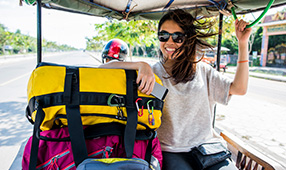
8 Little-Known Vacation Deals for Teachers
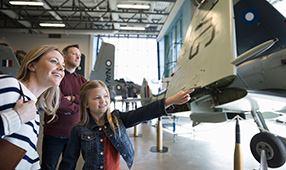
How to Enjoy Great Museums for Free
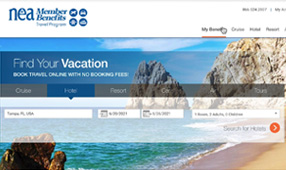
Finding Travel Deals Is Easy With the NEA Travel Program
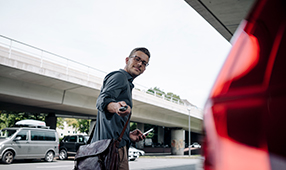
Car Rental Made Quick and Easy

How to Plan a Vacation Without Going Into Debt

Easy Ways to Save Money on a Road Trip

How to Dine on a Dime While Traveling

Travel the World With Grants Just for Educators

Don’t Miss These Top Discounts for Teachers and Education Professionals

Get Easy Access to Our Most Requested Deals and Discounts

A New Way for NEA Members to Find Exclusive Shopping Discounts

- The Journal
- Vol. 14, No. 1
The Educational Value of Field Trips
Jay P. Greene
Brian Kisida
Daniel H. Bowen
Jay P. Greene joined EdNext Editor-in-chief Marty West to discuss the benefits of field trips, including how seeing live theater is a more enriching experience to students, on the EdNext podcast .

Crystal Bridges; Crystal Bridges Museum of American Art; School Tour © 2013 Stephen Ironside/Ironside Photography Bo Bartlett – “The Box” – 2002 • Oil on Linen • 82 x 100 – Photographer is Karen Mauch
The school field trip has a long history in American public education. For decades, students have piled into yellow buses to visit a variety of cultural institutions, including art, natural history, and science museums, as well as theaters, zoos, and historical sites. Schools gladly endured the expense and disruption of providing field trips because they saw these experiences as central to their educational mission: schools exist not only to provide economically useful skills in numeracy and literacy, but also to produce civilized young men and women who would appreciate the arts and culture. More-advantaged families may take their children to these cultural institutions outside of school hours, but less-advantaged students are less likely to have these experiences if schools do not provide them. With field trips, public schools viewed themselves as the great equalizer in terms of access to our cultural heritage.
Today, culturally enriching field trips are in decline. Museums across the country report a steep drop in school tours. For example, the Field Museum in Chicago at one time welcomed more than 300,000 students every year. Recently the number is below 200,000. Between 2002 and 2007, Cincinnati arts organizations saw a 30 percent decrease in student attendance. A survey by the American Association of School Administrators found that more than half of schools eliminated planned field trips in 2010–11.
The decision to reduce culturally enriching field trips reflects a variety of factors. Financial pressures force schools to make difficult decisions about how to allocate scarce resources, and field trips are increasingly seen as an unnecessary frill. Greater focus on raising student performance on math and reading standardized tests may also lead schools to cut field trips. Some schools believe that student time would be better spent in the classroom preparing for the exams. When schools do organize field trips, they are increasingly choosing to take students on trips to reward them for working hard to improve their test scores rather than to provide cultural enrichment. Schools take students to amusement parks, sporting events, and movie theaters instead of to museums and historical sites. This shift from “enrichment” to “reward” field trips is reflected in a generational change among teachers about the purposes of these outings. In a 2012‒13 survey we conducted of nearly 500 Arkansas teachers, those who had been teaching for at least 15 years were significantly more likely to believe that the primary purpose of a field trip is to provide a learning opportunity, while more junior teachers were more likely to see the primary purpose as “enjoyment.”
If schools are de-emphasizing culturally enriching field trips, has anything been lost as a result? Surprisingly, we have relatively little rigorous evidence about how field trips affect students. The research presented here is the first large-scale randomized-control trial designed to measure what students learn from school tours of an art museum.
We find that students learn quite a lot. In particular, enriching field trips contribute to the development of students into civilized young men and women who possess more knowledge about art, have stronger critical-thinking skills, exhibit increased historical empathy, display higher levels of tolerance, and have a greater taste for consuming art and culture.
Design of the Study and School Tours
The 2011 opening of the Crystal Bridges Museum of American Art in Northwest Arkansas created the opportunity for this study. Crystal Bridges is the first major art museum to be built in the United States in the last four decades, with more than 50,000 square feet of gallery space and an endowment in excess of $800 million. Portions of the museum’s endowment are devoted to covering all of the expenses associated with school tours. Crystal Bridges reimburses schools for the cost of buses, provides free admission and lunch, and even pays for the cost of substitute teachers to cover for teachers who accompany students on the tour.
Because the tour is completely free to schools, and because Crystal Bridges was built in an area that never previously had an art museum, there was high demand for school tours. Not all school groups could be accommodated right away. So our research team worked with the staff at Crystal Bridges to assign spots for school tours by lottery. During the first two semesters of the school tour program, the museum received 525 applications from school groups representing 38,347 students in kindergarten through grade 12. We created matched pairs among the applicant groups based on similarity in grade level and other demographic factors. An ideal and common matched pair would be adjacent grades in the same school. We then randomly ordered the matched pairs to determine scheduling prioritization. Within each pair, we randomly assigned which applicant would be in the treatment group and receive a tour that semester and which would be in the control group and have its tour deferred.
We administered surveys to 10,912 students and 489 teachers at 123 different schools three weeks, on average, after the treatment group received its tour. The student surveys included multiple items assessing knowledge about art as well as measures of critical thinking, historical empathy, tolerance, and sustained interest in visiting art museums. Some groups were surveyed as late as eight weeks after the tour, but it was not possible to collect data after longer periods because each control group was guaranteed a tour during the following semester as a reward for its cooperation. There is no indication that the results reported below faded for groups surveyed after longer periods.
We also assessed students’ critical-thinking skills by asking them to write a short essay in response to a painting that they had not previously seen. Finally, we collected a behavioral measure of interest in art consumption by providing all students with a coded coupon good for free family admission to a special exhibit at the museum to see whether the field trip increased the likelihood of students making future visits.
All results reported below are derived from regression models that control for student grade level and gender and make comparisons within each matched pair, while taking into account the fact that students in the matched pair of applicant groups are likely to be similar in ways that we are unable to observe. Standard validity tests confirmed that the survey items employed to generate the various scales used as outcomes measured the same underlying constructs.
The intervention we studied is a modest one. Students received a one-hour tour of the museum in which they typically viewed and discussed five paintings. Some students were free to roam the museum following their formal tour, but the entire experience usually involved less than half a day. Instructional materials were sent to teachers who went on a tour, but our survey of teachers suggests that these materials received relatively little attention, on average no more than an hour of total class time. The discussion of each painting during the tour was largely student-directed, with the museum educators facilitating the discourse and providing commentary beyond the names of the work and the artist and a brief description only when students requested it. This format is now the norm in school tours of art museums. The aversion to having museum educators provide information about works of art is motivated in part by progressive education theories and by a conviction among many in museum education that students retain very little factual information from their tours.
Recalling Tour Details. Our research suggests that students actually retain a great deal of factual information from their tours. Students who received a tour of the museum were able to recall details about the paintings they had seen at very high rates. For example, 88 percent of the students who saw the Eastman Johnson painting At the Camp—Spinning Yarns and Whittling knew when surveyed weeks later that the painting depicts abolitionists making maple syrup to undermine the sugar industry, which relied on slave labor. Similarly, 82 percent of those who saw Norman Rockwell’s Rosie the Riveter could recall that the painting emphasizes the importance of women entering the workforce during World War II. Among students who saw Thomas Hart Benton’s Ploughing It Under , 79 percent recollected that it is a depiction of a farmer destroying his crops as part of a Depression-era price support program. And 70 percent of the students who saw Romare Bearden’s Sacrifice could remember that it is part of the Harlem Renaissance art movement. Since there was no guarantee that these facts would be raised in student-directed discussions, and because students had no particular reason for remembering these details (there was no test or grade associated with the tours), it is impressive that they could recall historical and sociological information at such high rates.
These results suggest that art could be an important tool for effectively conveying traditional academic content, but this analysis cannot prove it. The control-group performance was hardly better than chance in identifying factual information about these paintings, but they never had the opportunity to learn the material. The high rate of recall of factual information by students who toured the museum demonstrates that the tours made an impression. The students could remember important details about what they saw and discussed.
Critical Thinking. Beyond recalling the details of their tour, did a visit to an art museum have a significant effect on students? Our study demonstrates that it did. For example, students randomly assigned to receive a school tour of Crystal Bridges later displayed demonstrably stronger ability to think critically about art than the control group.
During the first semester of the study, we showed all 3rd- through 12th-grade students a painting they had not previously seen, Bo Bartlett’s The Box . We then asked students to write short essays in response to two questions: What do you think is going on in this painting? And, what do you see that makes you think that? These are standard prompts used by museum educators to spark discussion during school tours.
We stripped the essays of all identifying information and had two coders rate the compositions using a seven-item rubric for measuring critical thinking that was developed by researchers at the Isabella Stewart Gardner Museum in Boston. The measure is based on the number of instances that students engaged in the following in their essays: observing, interpreting, evaluating, associating, problem finding, comparing, and flexible thinking. Our measure of critical thinking is the sum of the counts of these seven items. In total, our research team blindly scored 3,811 essays. For 750 of those essays, two researchers scored them independently. The scores they assigned to the same essay were very similar, demonstrating that we were able to measure critical thinking about art with a high degree of inter-coder reliability.
We express the impact of a school tour of Crystal Bridges on critical-thinking skills in terms of standard-deviation effect sizes. Overall, we find that students assigned by lottery to a tour of the museum improve their ability to think critically about art by 9 percent of a standard deviation relative to the control group. The benefit for disadvantaged groups is considerably larger (see Figure 1). Rural students, who live in towns with fewer than 10,000 people, experience an increase in critical-thinking skills of nearly one-third of a standard deviation. Students from high-poverty schools (those where more than 50 percent of students receive free or reduced-price lunches) experience an 18 percent effect-size improvement in critical thinking about art, as do minority students.

A large amount of the gain in critical-thinking skills stems from an increase in the number of observations that students made in their essays. Students who went on a tour became more observant, noticing and describing more details in an image. Being observant and paying attention to detail is an important and highly useful skill that students learn when they study and discuss works of art. Additional research is required to determine if the gains in critical thinking when analyzing a work of art would transfer into improved critical thinking about other, non-art-related subjects.
Historical Empathy. Tours of art museums also affect students’ values. Visiting an art museum exposes students to a diversity of ideas, peoples, places, and time periods. That broadening experience imparts greater appreciation and understanding. We see the effects in significantly higher historical empathy and tolerance measures among students randomly assigned to a school tour of Crystal Bridges.
Historical empathy is the ability to understand and appreciate what life was like for people who lived in a different time and place. This is a central purpose of teaching history, as it provides students with a clearer perspective about their own time and place. To measure historical empathy, we included three statements on the survey with which students could express their level of agreement or disagreement: 1) I have a good understanding of how early Americans thought and felt; 2) I can imagine what life was like for people 100 years ago; and 3) When looking at a painting that shows people, I try to imagine what those people are thinking. We combined these items into a scale measuring historical empathy.
Students who went on a tour of Crystal Bridges experience a 6 percent of a standard deviation increase in historical empathy. Among rural students, the benefit is much larger, a 15 percent of a standard deviation gain. We can illustrate this benefit by focusing on one of the items in the historical empathy scale. When asked to agree or disagree with the statement, “I have a good understanding of how early Americans thought and felt,” 70 percent of the treatment-group students express agreement compared to 66 percent of the control group. Among rural participants, 69 percent of the treatment-group students agree with this statement compared to 62 percent of the control group. The fact that Crystal Bridges features art from different periods in American history may have helped produce these gains in historical empathy.
Tolerance. To measure tolerance we included four statements on the survey to which students could express their level of agreement or disagreement: 1) People who disagree with my point of view bother me; 2) Artists whose work is critical of America should not be allowed to have their work shown in art museums; 3) I appreciate hearing views different from my own; and 4) I think people can have different opinions about the same thing. We combined these items into a scale measuring the general effect of the tour on tolerance.
Overall, receiving a school tour of an art museum increases student tolerance by 7 percent of a standard deviation. As with critical thinking, the benefits are much larger for students in disadvantaged groups. Rural students who visited Crystal Bridges experience a 13 percent of a standard deviation improvement in tolerance. For students at high-poverty schools, the benefit is 9 percent of a standard deviation.
The improvement in tolerance for students who went on a tour of Crystal Bridges can be illustrated by the responses to one of the items within the tolerance scale. When asked about the statement, “Artists whose work is critical of America should not be allowed to have their work shown in art museums,” 35 percent of the control-group students express agreement. But for students randomly assigned to receive a school tour of the art museum, only 32 percent agree with censoring art critical of America. Among rural students, 34 percent of the control group would censor art compared to 30 percent for the treatment group. In high-poverty schools, 37 percent of the control-group students would censor compared to 32 percent of the treatment-group students. These differences are not huge, but neither is the intervention. These changes represent the realistic improvement in tolerance that results from a half-day experience at an art museum.
Interest in Art Museums. Perhaps the most important outcome of a school tour is whether it cultivates an interest among students in returning to cultural institutions in the future. If visiting a museum helps improve critical thinking, historical empathy, tolerance, and other outcomes not measured in this study, then those benefits would compound for students if they were more likely to frequent similar cultural institutions throughout their life. The direct effects of a single visit are necessarily modest and may not persist, but if school tours help students become regular museum visitors, they may enjoy a lifetime of enhanced critical thinking, tolerance, and historical empathy.
We measured how school tours of Crystal Bridges develop in students an interest in visiting art museums in two ways: with survey items and a behavioral measure. We included a series of items in the survey designed to gauge student interest:
• I plan to visit art museums when I am an adult.
• I would tell my friends they should visit an art museum.
• Trips to art museums are interesting.
• Trips to art museums are fun.
• Would your friend like to go to an art museum on a field trip?
• Would you like more museums in your community?
• How interested are you in visiting art museums?
• If your friends or family wanted to go to an art museum, how interested would you be in going?
Interest in visiting art museums among students who toured the museum is 8 percent of a standard deviation higher than that in the randomized control group. Among rural students, the increase is much larger: 22 percent of a standard deviation. Students at high-poverty schools score 11 percent of a standard deviation higher on the cultural consumer scale if they were randomly assigned to tour the museum. And minority students gain 10 percent of a standard deviation in their desire to be art consumers.
One of the eight items in the art consumer scale asked students to express the extent to which they agreed or disagreed with the statement, “I would tell my friends they should visit an art museum.” For all students who received a tour, 70 percent agree with this statement, compared to 66 percent in the control group. Among rural participants, 73 percent of the treatment-group students agree versus 63 percent of the control group. In high-poverty schools, 74 percent would recommend art museums to their friends compared to 68 percent of the control group. And among minority students, 72 percent of those who received a tour would tell their friends to visit an art museum, relative to 67 percent of the control group. Students, particularly those from disadvantaged backgrounds, are more likely to have positive feelings about visiting museums if they receive a school tour.
We also measured whether students are more likely to visit Crystal Bridges in the future if they received a school tour. All students who participated in the study during the first semester, including those who did not receive a tour, were provided with a coupon that gave them and their families free entry to a special exhibit at Crystal Bridges. The coupons were coded so that we could determine the applicant group to which students belonged. Students had as long as six months after receipt of the coupon to use it.
We collected all redeemed coupons and were able to calculate how many adults and youths were admitted. Though students in the treatment group received 49 percent of all coupons that were distributed, 58 percent of the people admitted to the special exhibit with those coupons came from the treatment group. In other words, the families of students who received a tour were 18 percent more likely to return to the museum than we would expect if their rate of coupon use was the same as their share of distributed coupons.
This is particularly impressive given that the treatment-group students had recently visited the museum. Their desire to visit a museum might have been satiated, while the control group might have been curious to visit Crystal Bridges for the first time. Despite having recently been to the museum, students who received a school tour came back at higher rates. Receiving a school tour cultivates a taste for visiting art museums, and perhaps for sharing the experience with others.
Disadvantaged Students
One consistent pattern in our results is that the benefits of a school tour are generally much larger for students from less-advantaged backgrounds. Students from rural areas and high-poverty schools, as well as minority students, typically show gains that are two to three times larger than those of the total sample. Disadvantaged students assigned by lottery to receive a school tour of an art museum make exceptionally large gains in critical thinking, historical empathy, tolerance, and becoming art consumers.
It appears that the less prior exposure to culturally enriching experiences students have, the larger the benefit of receiving a school tour of a museum. We have some direct measures to support this explanation. To isolate the effect of the first time visiting the museum, we truncated our sample to include only control-group students who had never visited Crystal Bridges and treatment-group students who had visited for the first time during their tour. The effect for this first visit is roughly twice as large as that for the overall sample, just as it is for disadvantaged students.
In addition, we administered a different version of our survey to students in kindergarten through 2nd grade. Very young students are less likely to have had previous exposure to culturally enriching experiences. Very young students make exceptionally large improvements in the observed outcomes, just like disadvantaged students and first-time visitors.
When we examine effects for subgroups of advantaged students, we typically find much smaller or null effects. Students from large towns and low-poverty schools experience few significant gains from their school tour of an art museum. If schools do not provide culturally enriching experiences for these students, their families are likely to have the inclination and ability to provide those experiences on their own. But the families of disadvantaged students are less likely to substitute their own efforts when schools do not offer culturally enriching experiences. Disadvantaged students need their schools to take them on enriching field trips if they are likely to have these experiences at all.
Policy Implications
School field trips to cultural institutions have notable benefits. Students randomly assigned to receive a school tour of an art museum experience improvements in their knowledge of and ability to think critically about art, display stronger historical empathy, develop higher tolerance, and are more likely to visit such cultural institutions as art museums in the future. If schools cut field trips or switch to “reward” trips that visit less-enriching destinations, then these important educational opportunities are lost. It is particularly important that schools serving disadvantaged students provide culturally enriching field trip experiences.
This first-ever, large-scale, random-assignment experiment of the effects of school tours of an art museum should help inform the thinking of school administrators, educators, policymakers, and philanthropists. Policymakers should consider these results when deciding whether schools have sufficient resources and appropriate policy guidance to take their students on tours of cultural institutions. School administrators should give thought to these results when deciding whether to use their resources and time for these tours. And philanthropists should weigh these results when deciding whether to build and maintain these cultural institutions with quality educational programs. We don’t just want our children to acquire work skills from their education; we also want them to develop into civilized people who appreciate the breadth of human accomplishments. The school field trip is an important tool for meeting this goal.
Jay P. Greene is professor of education reform at the University of Arkansas, where Brian Kisida is a senior research associate and Daniel H. Bowen is a doctoral student.
Additional materials, including a supplemental study and a methodological appendix , are available.
For more, please see “ The Top 20 Education Next Articles of 2023 .”
This article appeared in the Winter 2014 issue of Education Next . Suggested citation format:
Greene, J.P., Kisida, B., and Bowen, D.H. (2014). The Educational Value of Field Trips: Taking students to an art museum improves critical thinking skills, and more . Education Next , 14(1), 78-86.
Last Updated
License this Content
Latest Issue
Spring 2024.
Vol. 24, No. 2
We Recommend You Read
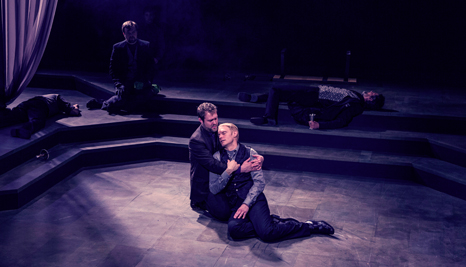
Learning from Live Theater
Students realize gains in knowledge, tolerance, and more
by Jay P. Greene
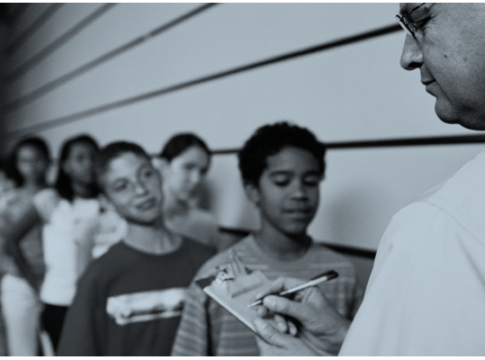
Getting Ahead by Staying Behind
An evaluation of Florida’s program to end social promotion
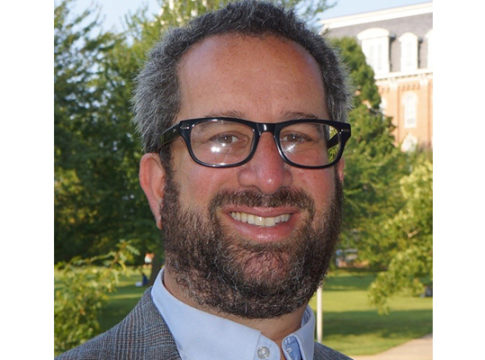
Straight Up Conversation: Scholar Jay Greene on the Importance of Field Trips
by Frederick Hess
- Our Mission
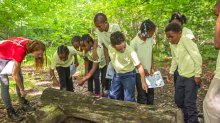
Yes, Field Trips Are Worth the Effort
Culturally enriching trips can boost grades and decrease absences and behavioral infractions, new research reveals.
As a teacher, Elena Aguilar often looked for opportunities to get her students out of the classroom and into different neighborhoods or natural environments. “We did the usual museum trips and science center stuff, but I loved the trips which pushed them into unfamiliar territory,” writes Aguilar , an instructional coach and author. Nudging kids out of their comfort zones, she says, “taught them about others as well as themselves. It helped them see the expansiveness of our world and perhaps inspired them to think about what might be available to them out there.”
Aguilar’s thinking made an impact: 15 years after traveling with her third-grade class to Yosemite National Park, a student contacted Aguilar on Facebook to thank her for the life-changing excursion. “You changed our lives with that trip,” the student wrote. “It's what made me want to be a teacher, to be able to give that same gift to other kids.”
As schools grapple with pandemic-related concerns about balancing in-seat instructional time with non-essentials like trips, new research published in The Journal of Human Resources argues that field trips, and the vital educational experiences that they provide—whether it’s a visit to a local museum or a big commitment like Aguilar’s national park trip—deliver a host of positive social and academic outcomes and are worth the effort.
“The pandemic should not keep schools from providing these essential cultural experiences forever,” asserts Jay P. Greene , one of the study’s co-authors and a senior research fellow at the Heritage Foundation, in an opinion piece for the Daily News . “If schools make culturally-enriching field trips an integral part of the education experience, all students—especially those whose parents have a harder time accessing these experiences on their own—would benefit.”
In the study, researchers assigned more than 1,000 fourth- and fifth-grade students in Atlanta to two groups. One group participated in three to six “culturally-enriching” field trips—visits to an art museum, a live theater performance, and a symphony concert—while students in the control group stayed put in class. The outcome? Kids in the field trip group “scored higher on end-of-grade exams, received higher course grades, were absent less often, and had fewer behavioral infractions,” compared to students in the control group, according to a ScienceDaily brief . Benefits lasted two to three years, Greene writes, and were “most visible when students were in middle school.”
“We are able to demonstrate that a relatively simple intervention—and we consider it pretty low-touch; three field trips in a year, maybe six field trips in two years—can actually have some substantial impacts,” says lead study author Heidi Holmes Erickson in an interview with The 74 . “They’re not just limited to social benefits. It shows that smaller interventions can actually have some significant effects on academics as well.”
Field trips aren’t a threat to in-class instruction, Erickson notes, they’re a tool to help bolster engagement and expand students’ horizons. “It's possible to expose students to a broader world and have a culturally enriching curriculum without sacrificing academic outcomes, and it may actually improve academic outcomes,” Erickson says. Far from harming test scores, the researchers found that culturally rich excursions reinforce academics and “students who participated in these field trips were doing better in class.”
Meanwhile, class trips don't need to be elaborate productions to make an impact: small excursions outside the classroom—"low-touch," as the researchers call them—can pack a punch. Here’s how three educators recommend dialing it back with low-stakes options that are both engaging and stimulating for students, but might not require days to prepare and plan:
Make Them Bite-Sized : Instead of allocating an entire day to a field trip, educational consultant Laurel Schwartz takes her classes on micro field trips , or “short outings that can be completed in a single class period.” These real-world encounters, she says, are especially beneficial for English learners and world language students. A micro field trip to a nearby park or around school grounds, for example, can be a great opportunity to “enhance a unit on nature and wildlife while reinforcing vocabulary for senses, colors, and the concepts of quantity and size,” Schwartz writes. “Afterwards, students might write descriptive stories set in the place you visited using vocabulary collected and defined together by the class.”
Try Teacher-Less Trips : To encourage exploration and learning outside of the classroom, former social studies teacher Arch Grieve removes himself from the equation with teacher-less field trips rooted in students’ local communities. Grieve only suggests options that are directly tied to a unit being discussed in class—like attending a talk at a local university or visiting a museum or cultural festival—and offers extra credit to incentivize students. “These trips allow for a greater appreciation of my subject matter than is possible in the school setting, and perhaps best of all, there's little to no planning involved.”
Explore Virtual Options : It may not be as fun as visiting in person, but the Internet makes it possible to visit museums like The National Gallery of London and The Vatican Museums without leaving the school building. Middle school English teacher Laura Bradley likes to search the Museums for Digital Learning website by topic, keyword, and grade level, to find lessons and activities that meet her unique curricular needs. The site grants access to digitized museum collections, 3D models, audio files, documents, images, and videos.
Field Trips: Pros and Cons
Off-campus excursions can enhance learning, but they pose challenges
- Tips & Strategies
- An Introduction to Teaching
- Policies & Discipline
- Community Involvement
- School Administration
- Technology in the Classroom
- Teaching Adult Learners
- Issues In Education
- Teaching Resources
- Becoming A Teacher
- Assessments & Tests
- Elementary Education
- Secondary Education
- Special Education
- Homeschooling
- M.Ed., Curriculum and Instruction, University of Florida
- B.A., History, University of Florida
Are field trips worth all the time and effort required to make them successful? Most teachers have asked themselves this question at one time or another, typically when feeling overwhelmed as they prepare for a field trip. The truth is that field trips at any grade level can cause quite a few headaches for teachers. At the same time, well-planned field trips can provide students with truly educational experiences they cannot get in the confines of the classroom. Following is a look at the pros and cons of field trips.
Benefits of Field Trips
Field trips provide students with new opportunities for learning through experience:
Different Learning Modalities
Information is presented to students in a way that meets different learning modalities. Field trips provide students with the ability to learn by doing instead of just passively listening to the information being taught in class.
Students are exposed to new experiences that, hopefully, broaden their horizons. This can be especially helpful for students from lower socioeconomic backgrounds who may not have been exposed to these opportunities before.
Reinforcing Concepts
Concepts that have already been learned in the classroom can be reinforced. Sometimes seeing information being taught in a new way can make a big difference in student comprehension. There is quite a difference between being taught about something like hurricanes and wind speed and experiencing them in an exhibit at a science museum.
Shared Reference
Students are provided with shared reference points that teachers can then refer to and use in future lessons. There may be an opportunity to have two or more disciplines use a field trip as an enrichment activity. For example, a trip to an art museum (art) may couple with a timeline for social studies (political systems in place when art was created) or math (measurements) can combine with science in a biosystem (river, beach, and meadow). In this manner, several teachers can then refer to things that students saw and experienced during the field trip for the remainder of the school year.
Increased Student-Teacher Communication
Students and teachers can see each other in a different light, helping to increase communication between them. Some students who might be overlooked in class because they are quiet might really come alive on field trips.
If parents are involved as chaperones, they can feel more connected to the teacher and the lessons being taught. They can get to know the teacher better and understand what teachers deal with daily.
Meeting Standards
Standards in social studies and science require students to have experiences related to concepts in the discipline. In social studies, students are required to take informed action. In science, students need to be exposed to a series of concepts to help them to better understand the world around them. Field trips help teachers meet these objectives.
Problems With Field Trips
Teachers face a number of concerns and challenges when designing field trips that they need to recognize and address before planning a field trip.
Preparation Needed
Field trips take preparation if teachers want to make them meaningful. They have to coordinate locations and transportation. They also need to create an effective lesson plan that they will follow when on the excursion.
Students will be out of the school building for a field trip, which means they will miss other classes—at least in middle and high school. If each core subject area (ELA, math science, or social studies) offers one field trip during a school year, students would be out of the building for four days. School attendance policies may count these as excused absences, but any field trip that removes students from class reduces the number of classroom hours.
Trips Can Be Costly
Field trips can be expensive, and some students may not have the funds to attend. Organizers of the field trip may consider asking for parents to add a few dollars to help students in need. School boosters may need to host a fundraiser for students to raise money for more expensive trips.
Teachers have to organize the collection of money and the assigning of chaperones. Teachers need to spend some time creating student groups that work for all students and ensuring that chaperones are assigned accordingly.
Teachers will likely have to deal with red tape as they plan field trips including permission slips, medical information, and emergency procedures. Schools typically require paperwork from teachers and their students.
Potential Discipline Problems
Students will be placed in a larger environment than the classroom. New surroundings could possibly lead to additional discipline problems. Because teachers typically only lead a small group (such as 30 to 40 students), they may not be able to maintain control over the behavior of every student on the field trip, especially if the group is large. Teachers should go over rules and expectations before the field trip, enforce the rules strictly while away from school grounds, and create effective consequences for misbehavior.
May Be Disappointing
The field trip destination might not live up to the teacher's expectations. The location might not be as interesting as the teacher thought it would be. The time to complete the field trip might be considerably less than was expected. Therefore, it is a good idea to have some contingency plan in mind just in case.
There may be students who, for one reason or another, will not attend the field trip. Teachers must leave lessons, usually enrichment offerings, that mirror some of the concepts being experienced on the field trip.
Requesting Feedback
One of the best ways to measure the success of a field trip (other than returning all students back to the school) is to ask for feedback. Teachers can post a survey for participants and for other chaperones asking them to express how they would evaluate the trip.
Opportunity to Reflect
Students should have the opportunity to reflect on the trip and write a response in a journal or essay. Requiring journal responses after the trip can solidify the information learned as students reflect on their new experiences. Asking students to write a thank you to the school principal for allowing the trip may even smooth the path to additional field trips.
Worth the Difficulties
Many teachers feel that well-chosen field trip destinations are worth the difficulties they may create. The key is taking the time to plan each aspect as much as possible. Teachers should be proactive when thinking about and planning field trips. Students, on the other hand, may remember the experience of the school field trip as a highlight of the school year, and the time they learned more than anything taught in class.
- How to Have a Safe, Fun, and Successful Field Trip
- Pros and Cons of Teaching
- The Pros and Cons of Block Schedules
- What Are Some Pros and Cons of the Common Core State Standards?
- Parents Guide to the Pros and Cons of Homeschooling
- Whole Group Discussion Pros and Cons
- 10 Pros and Cons of Being a School Principal
- 11 Pros and Cons of Using Movies in Class
- How to Avoid Common Mistakes When Writing Learning Objectives
- The Pros and Cons of Allowing Cell Phones in School
- 7 Back to School Tips for Teachers
- Reasons Why You Should Consider Private School
- 7 Ways to Take Control of Your Classroom to Reduce Student Misbehavior
- Pros and Cons of Year-Round School
- Advantages and Disadvantages of Lecturing
- What You Will Find in the Ideal Classroom
- WellTrainedMind.com
- WTMAcademy.com
- K-8 Curriculum Board
- Existing user? Sign In

How many 'field trip' type days do you have per year?
By RobinM , July 7, 2011 in K-8 Curriculum Board
- Reply to this topic
- Start new topic
Recommended Posts
I remember having a few field trip days in public school as well as days when we played games and didn't really do any real school work. I'm curious, how many field trip days do you have per year? Do public schools set aside so many days per year for field trips or 'game days'?
Link to comment
Share on other sites, lovemyblessings.
Due to lack of funding, planning, or whatever- our public schools no longer have any field trips at all. As a family, I would say we will be doing 3 per month this year, as far as actual structured learning. But there will be many unplanned outings where we learn great stuff!
I know the schools in our state are struggling too. So sad that field trips are being cut... I remember looking forward to those days so much!
Thanks for the input. I was thinking 1 or 2 days per month of informal learning, whether it be a field trip, community service etc... I just wanted to see if there were any rules regarding how many were allowed etc..

I can remember just two when I was in school. :glare:
When we were hsing, we left the house every Thursday for a field trip. :D

Well I call our Library days field trips and those are weekly lol. We otherwise try to go into the city once a month for zoo, museums, events etc. It all depends on the budget that month.

Laura Corin
We used to try to do a field trip once a month when I home educated. Calvin and Hobbes' school do a couple of school trips per year, plus one sports day (in addition to regular PE).
We are going to a local dairy in August for a tour and we go to the zoo when ever we can. We did not do many last year; but this year, I would like to get one in a month.
I try to do about one per month. Sometimes it ends up being DH who takes the older to on an overnight trip to a zoo, aquarium, science center, or whatever.
In school, DS had 2 or 3 field trips in K and only 1 field trip in first grade (there no field trips the 2nd semester of that year after we pulled out). It was up to teacher to decide whether to take a field trip. Field trips are a bit of a pain because you have to deal with permission slips, gathering money for the trip, arranging a bus or carpools, etc.
It varies but we try to do a decent amount of field trips. We really enjoy that kind of thing. We do anywhere from 1-4 a month, sometimes more. Sometimes on our own, sometimes with our homeschool group.
mcconnellboys
Most of the public schools in our area have been foregoing field trips for the past few years because they do not have money in the budget to pay for the buses and drivers.
During the elementary and early middle school years we did field trips most Fridays. As work gets more involved, however, we take fewer trips. This past school year (seventh), I'd guess offhand that we probably averaged about 2 a month. We've never done a lot of projects; field trips have always been the fun in our school!

As a kid growing up in public school, I, like others, got 1-2 per year.
We do field trips quite often... probably on average one a week - some weeks none, other weeks one, others two or three. But it helps that we live in DC.

We used to do several a month but now my car has broken down we are not making it out very much.

Local schools have two and they are very close to school. This is in lower age levels. Then for the 6th grade they have a weekend where they get a day out of school at the end of the year. THey have a field day and it seems like anytime they have a half day that is the day they schedual a convo. They have at least 6 convos that I know of.
This is for our school district (worked in it a few years ago) I'm not sure if they changed it or not because our master gardeners program was going to do a class with the students and my friend that is a teacher told us they are not allowed to devote any time at all to field trips, visitors, or any educational program until ISTEP is over in the spring. This is for third graders up, but still. Wow.
We have at least two field trips a month.

In my husband's school district there is one field trip in 4th grade to a California mission and Camp K.E.E.P. in 6th grade for schools that raise their own money. That's it for grades K-6.
In our home school we typically go on 9-10 field trips a year. Probably half of those are day long trips (out of town). We used to go on more when the children were younger.

We take a field trip every Wednesday. When my big kids were small we were constantly going to the zoo, the park, the art museum, the botanical gardens, etc. I would worry about shortchanging my current little ones if all we did was stay home to do school with the big kids.
I think our local schools just take 2-3 field trips per year in elementary, but they have quite a few parties/field days/assemblies. When I was in elementary we had a field trip at least every month: aquariums, the symphony, art museums, science museums, plays, week long science camps, etc. I was in a self-enclosed class for gifted children with special funding, though, so I think I had an unusual amount of field trip enrichment as a child.
I actually went back and counted the field trip days that I included in our school day count. A total of 14! Now, that included 5 of our days in DC so it was a bit higher than normal, but it is still far more than the 2 - yes, 2 - that our local PS teachers are allowed.
In addition to DC we did things like an Ecologist-for-the-Day program, 2 concert symphony days, a day on the Yorktown aircraft carrier, the 150th anniversary of Ft. Sumpter in Charleston, the art museum, the state museum, and a day of science classes. All were productive yet fun days, and the boys surely learned more than by sitting at our table.
I really feel for the PS teachers - many of the fieldtrips we do are free/very low cost, yet they are flat out not allowed to take time away from class.
In our school district, public school children go on 1-2 field trips a year during K-6. Children in the gifted/talented program normally have one extra field trip to see a theater production.
We are field trip junkies. :D We went on 39 field trips in 2010 and 48 in 2009. (We school by calender year.) We do plan our vacations around educational experiences, so that includes several week long vacations where we went to a new museum or zoo every day.
I don't count multiple trips to the same place in one year twice. (Ex: We have zoo and arboretum memberships, but I only count that as one field trip even if we go 10 times during the year.)
We do live in a major metro area and I keep up with local events, art gallery exhibits, etc. I know free or discounted days to every attraction in the area, so that helps keep cost down.
When we first started homeschooling I read a book that talked about 'community based homeschooling.' The author talked about taking advantage of all the wonderful things your community offers and giving our children broad experiences. It just really hit a nerve with me. I have decided to apply that to our homeschool journey.
Thanks for all of the responses everyone! It is so helpful to hear from all of you. This is only our second year homeschooling...the first year we really only did a half year so I was just getting my feet wet.
So, how do you all record field trip days in your log books? It is okay to count field trip days as actual school days? I can see us doing 2-3 per month. I even thought about having the kids visit a nursing home once a month to visit with the residents or do crafts with them etc... Could that be counted as a school day?
Thank you again! :)

Beth in SW WA
We school year-round with breaks. We do educational family field outings often with trips to zoos, museums, political rallies, etc. We attend theater productions in Portland. We did a 2-week east coast road trip in Apri l (DC, Mt. Vernon, Gettysburg, Philly, Newport, Plymoth, Boston). We took a vacation week to Disneyland in May.
I take my dc to meet our local political reps. Congresswoman Jaime Herrera Beutler's assistant gave us a private tour of the US Capitol. We stood on the floor of the House Of Representatives. That was the highlight of our year. :)

My plan is to do at least one a month, hopefully two or three. I have flexibility on Fridays and I am trying to set up a four day week schedule so that I can plan for trips, special projects or even catch-up days.
raceNzanesmom
At least once a month, usually twice. Plus library and bookstore trips.
When I worked in PS there was usually only funding for one trip per grade level per year. The cost for busses was/is insane! Occasionally they get grants for special trips- like all 4th and 5th graders go to Symphony Day. Special Ed kids also get more due to grants. If, by chance, a school is within a short walking distance sometimes kids get extra. We have one school very near the art musuem (about 3-4 blocks), so I think they take a trip each year. And another school usually visits a TV station (one block over).
mamatohaleybug
As many as we want to! :auto: One of the biggest joys of homeschooling!! :D
As for public schools around here, 2 or 3. One big one (an event 30 miles away) and one small one (to the local park), usually. Sometimes an extra thrown in.
Not counting special things we'll do while on vacation this coming year, we're averaging five field trips a month.
One is to the monthly homeschool days program at the science center; since that's a trip for us, I also plan us going to something else that day in the city of the science center to make the drive worth it (ie. zoo, children's museum, history museum, botanical gardens, etc.) - so we actually get a two-fer on that day a month.
The others are once a week things I find to do that are more local to us - be it a program at the local museum, a visit to the capitol, or a play, we do something each week that's local and a field trip.
I don't count going to the library as a field trip....and this year I have only once a month on the calendar for library since we have a lot of other things planned and I need fewer books from the library this year than I did last year.

Wow, you guys are good. I think we did 5 for the year. That doesn't count library/park trips; that was actual field trips - like to a farm, museum, botanical garden, etc. We couldn't afford to do multiple trips per month, both gas & admission costs.
We couldn't afford to do multiple trips per month, both gas & admission costs.
Many art galleries here are free for their regular collection, but extra $ for special exhibits. If you just want to get in to see a museum, skip the special exhibit.
Also, science museums, zoos and botanical gardens offer reciprocal memberships - membership at one location allows you free or discounted entry into 100s of others around the nation.
I also arrange field trips for our homeschool group, as I can generally get a discount if we have a group of 10 or more.
Search the paper for coupons. Likewise, if you live in an urban or tourist area, pick up those freebie magazines that are often at the airport, hotels and restaurants. They are generally full of coupons.
If you newspaper puts out a "weekend guide" or "community planner" section, get in the habit of looking through it for ideas, special offers, etc.
Hint: Visit a museum's website and look to see if they have a section on "education." Many do and any info on planning group tours and/or discounts will be listed under there.
Can't help with gas prices... :tongue_smilie:
MomToJediKnights
I don't know what our local PS does.
We have at least 1-3 a month. We have season passes to the children's theater, so that's a monthly visit. We also have passes to the zoo and rotate that out with museums and other places (fire dept, police dept, etc).
Last year we did about 5 planned field trips.
This year, I would like to get a membership to the Natural History Museum to help our nature studies along, so we will be doing more field trips.
Our museum has free admission on Tues afternoon. The children's musuem (lots of science activities) has 1/2 price admission one day a week. I'd love to get a season pass to the children's museum, but I missed it before it sold out on Groupon.
We got season passes to the zoo through Groupon. It was $30 for the whole family for a year, that's 1/2 the normal cost!! I'm hoping they offer it again this year.
We split a season pass with another HS family for the children's theater. It worked great since we both only have two kids. There were enough tickets for both of our families to see every show. I think the cost per ticket was about $2. If I had bought them day of the show, it would be closer to $20 for me to take my kids!! Passes really save you money!
We are also doing free bowling this summer, but I don't call that a field trip. :tongue_smilie:
Many museums have free or half-price days. Many art galleries here are free for their regular collection, but extra $ for special exhibits. If you just want to get in to see a museum, skip the special exhibit. Also, science museums, zoos and botanical gardens offer reciprocal memberships - membership at one location allows you free or discounted entry into 100s of others around the nation. I also arrange field trips for our homeschool group, as I can generally get a discount if we have a group of 10 or more. Search the paper for coupons. Likewise, if you live in an urban or tourist area, pick up those freebie magazines that are often at the airport, hotels and restaurants. They are generally full of coupons. If you newspaper puts out a "weekend guide" or "community planner" section, get in the habit of looking through it for ideas, special offers, etc. Hint: Visit a museum's website and look to see if they have a section on "education." Many do and any info on planning group tours and/or discounts will be listed under there. Can't help with gas prices... :tongue_smilie:
One of the reasons why we can do as many field trips each year is that we have a science center membership ($65 for the year) which has reciprocal privleges at the ASTC science centers; a children's museum membership ($125 for the year) which has reciprocal privleges at ACM children's museums. Many of the other museums we go to (history, anthropology, art, etc.) are donation admissions, which I'll make a small donation when we go. The zoos have special discount days - sometimes free days, the botanical gardens have free days, and lots of other venues offer discount admissions - you just have to keep an eye out for the coupons and/or special days listed on their calendars.
Last year was our first year hsing and we did at least eight field trips with groups of other hs'ers. That doesn't include the zoo, the park and the library wwhich we do all the time nor family excursions.
One year, when we were living in San Diego, I thought it would be wonderful to visit all 21 California missions...in a week...well, actually, it was just 18, as we were able to go to San Diego, Capistrano, and San Luis Rey before we left home.
NEVER DO THAT!!!
It was the field trip from heck. What was I thinking??:blink:
Join the conversation
You can post now and register later. If you have an account, sign in now to post with your account.
× Pasted as rich text. Paste as plain text instead
Only 75 emoji are allowed.
× Your link has been automatically embedded. Display as a link instead
× Your previous content has been restored. Clear editor
× You cannot paste images directly. Upload or insert images from URL.
- Insert image from URL
- Submit Reply
- Leaderboard
- Board Rules
- All Activity
- Classifieds
- Create New...

How To Easily Plan Monthly Homeschool Field Trips
For years, we’ve taken at least one homeschool field trip each month of the school year. They have created some of our best memories and always almost supply us with wonderful learning opportunities.
It may sound overwhelming to plan monthly field trips, but it’s really not that hard at all when you’re organized – and I’ll help you get organized!
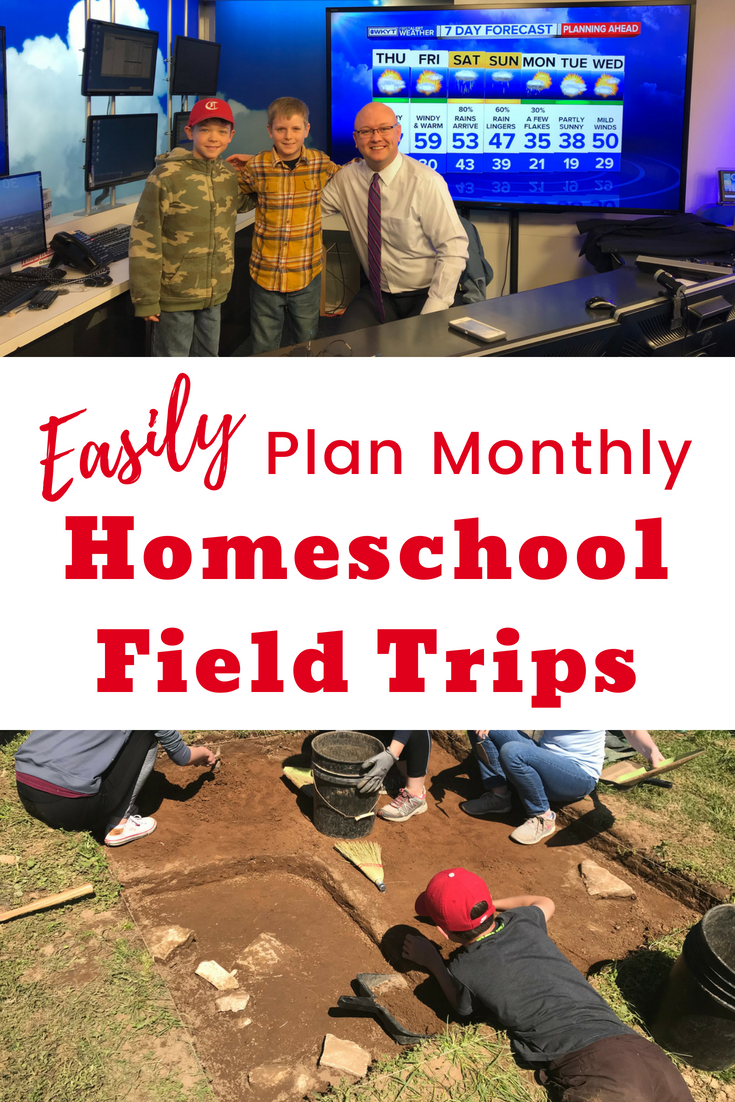
Why Do We Take So Many Homeschool Field Trips?
Over the past eighteen years of homeschooling, I bet our family has taken over 100 field trips. That’s a lot of experiential learning!
Field trips are the perfect example of hands-on, real-life learning. I love that so many of them are taught by professionals who know much more than me about whatever topic is at hand. Every bit of time, effort, and money spent has been worth it for such powerful learning outside of the textbook.
History, science, and artist study come alive as you tour museums and take part in special classes. Interpretive nature walks lead you to observe things you’ve never noticed before. The arts are truly appreciated as you enjoy various musical and theatrical performances. Even something as simple as a cemetery scavenger hunt can creatively teach local culture and history.
Field trips are more than just extras in our homeschool. They are one of the best tools I have in my homeschooling toolbox.
How To Plan Monthly Homeschool Field Trips
In various years and at various times, I’ve gone about planning homeschool field trips differently. Each scenario worked well since it matched the flow of our school at the time.
Spontaneous Field Trips
Each month, check your state’s tourism calendar and the schedules of nearby museums, nature centers, zoos, and theaters. You should find a list of possibilities for special classes, special exhibits, festivals, history fairs, and more. Choose one (or more) of interest and enjoy.
Field Trips to Supplement Learning
If you have an overall plan of which history and science topics you’ll be studying during the upcoming school year, you can plan field trips that supplement those topics. For example, if you plan to learn about government systems, you might plan field trips to your state capital and county courthouse. Or, if you plan to learn about cold-blooded animals, you might plan field trips to a reptile zoo, a fish hatchery, and a pond in the spring to observe frogs.
Subject-Focused Field Trips
Each month of the year could have a different subject focus. If September’s focus subject is science, you might schedule a trip to the airport or take a special STEM class. If October’s focus subject is history, you might visit an interpretive history festival or a nearby history museum. In November, you might focus on nature study and hike a new trail or take a class at the zoo. December’s focus subject might be fine arts and you could consider attending a play or a concert.
Yearly-Focused Field Trips
Every once in a while, you might spend an entire year taking field trips focused on one subject. When we studied KY History, almost every field that year had something to do with learning more about our state and its history. We visited landmarks, history museums, cemeteries, state parks, forts, caves, and other tourist attractions. All of us look back on that year with fond memories.
Student-Planned Field Trips
If your children are interested, allow them to take a turn in planning one or more of the monthly field trips. You might supply a list of possibilities or expect them to research their own possibilities. Either way, if they are old enough, encourage them to make any necessary calls and reservations.
Are You Making Homeschool Field Trip Plans?
From experience, I’ve learned that I need to get the monthly field trip planned by the beginning of the month – or earlier. Otherwise, it’s way too easy to get to the end of the month and realize life got too busy and we missed our opportunity.
Once I’ve set the date and taken just a few minutes to get the details in order – like hours of operation, reservations, cost, and/or how long it will take me to get there – we’re set. Homeschooling can go on as usual for the rest of the month and we joyfully look forward to the fabulous field trip that will happen.
I keep a simple yearly field trip planning page in my homeschool binder that helps me stay organized. Feel free to print it off for your own binder if you’d like to keep all your field trip details in one convenient place. (P.S. It also happens to be a great addition to end-of-the-year portfolios.)
I’ve Got You Covered On Nature Field Trips
Nature walks make great field trips, too! The 19 NaturExplorers guides , 100+ Creative Nature Walks , or 40 Science Labs On-the-Go can help you with wonderful ideas for things to do to make nature walks meaningful and fun.

Other Posts You Might Enjoy
- Pingback: 7th Grade Homeschool Curriculum - Homeschool Notes
…Agree with this as well. Parent involvement is very important. We always need Hands-on education before finalizing a field trip. My wife and our son have had many day/evening disappointments after failing to truly educate ourselves before hand. As of now, we’re 52 great educational activities in.
That’s a really interesting point! I agree that some field trips are definitely more rewarding and educational with at least a little preparation about the topic beforehand.
Leave a Reply
Your email address will not be published. Required fields are marked *
- Grades 6-12
- School Leaders
FREE Book Bracket Template. For March and Beyond!
Our Favorite Second Grade Field Trips (Virtual and In-Person, Too!)
Don’t make fuss, just get on the bus!

With their growing independence, ability to think logically, and longer attention span, second graders are a real joy to teach. Those characteristics also make for some great field trips. So if you’re thinking about learning experiences for your second graders, you’ll want to check out our list of best second grade field trips.
Not all of these trips will be possible everywhere, but keep in mind any local treasures that are unique to your area. And when you can’t manage a trip—for whatever reason—try our virtual second grade field trips below.
In-Person Second Grade Field Trips
1. a nature center.
A nature center is the perfect place for kids to learn about local plant and wildlife, as well as some beginning geology (land and water) concepts. Activities vary by location but might include a nature hike or live animal presentation.
2. The Children’s Theater
Second graders are a great age for a live theater experience. Children’s theaters generally have offerings based on age-appropriateness. Many plays are based on classic children’s literature, so you can read the book aloud first and then discuss the similarities/differences after!
[contextly_auto_sidebar]
3. The Hospital

Community helpers are an important part of the second grade curriculum. If they’ve already been to the fire and police station, a tour of a hospital (when it’s safe to do so) might be an option for more mature learners who want an up-close look at the work of doctors.
Going to the zoo provides students with the chance to observe animal behaviors and learn about wildlife conservation. Most of them, like the San Diego Zoo , have educational programs, including keeper talks and up-close animal encounters.
5. A Factory
Second graders are curious about how things work, so a trip to a factory is likely to be of high interest to them. Cars, chocolates, textiles … the possibilities are endless!
6. An IMAX Theater
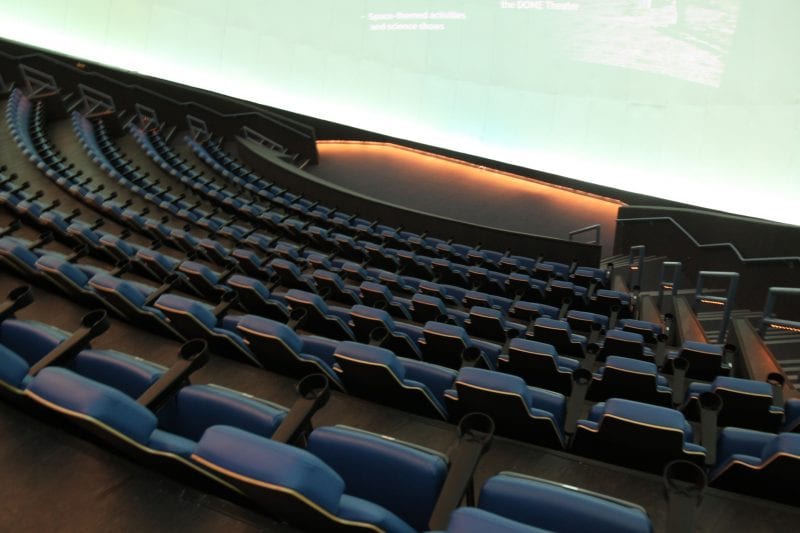
This isn’t any old movie theater, and you won’t be taking them to see Pixar’s latest release. But the IMAX experience is something else, and—given educational content like a nature documentary—something second graders should experience.
7. The Children’s Museum
Steer your second graders away from any areas that might seem too “babyish” for them. Instead, point them to cultural and historical exhibits, as well as any available Makerspace activities.
8. The Aquarium
If you’re not lucky enough to have a zoo close by, an aquarium is another good choice. Students will get a window into life under the sea, and lots of aquariums have touch pools for the ultimate in hands-on learning.
9. A Planetarium

Kids love to look at the moon and stars. A visit to a planetarium is the perfect introduction to the solar system. Second graders can take in a show and try to identify constellations.
10. A Fish Hatchery
A trip to the fish hatchery is a great way to learn about the life cycle of a fish, fish anatomy, and water quality. Plus, the kids will enjoy the underwater viewing windows and the opportunity to feed the young fish that are features of most hatcheries.
Virtual Second Grade Field Trips
1. an egg farm.

We love these virtual egg farm field trips from the American Egg Board. Make sure you catch the elementary-friendly versions of Hertzfeld Poultry and Creighton Brothers Farms.
[embedyt]https://www.youtube.com/watch?v=_6wbfVWVk8Q[/embedyt]
Most zoos have live webcams in some of their most popular exhibits, such as the Panda Cam at Zoo Atlanta . However, some zoos offer a more in-depth look. You’ll definitely want to check out the San Diego Zoo .
3. The Aquarium
[embedyt]https://www.youtube.com/watch?v=mY8__n13tKM[/embedyt]
It’s a similar story with aquariums. You have your pick of live webcams, but our favorites are the Georgia Aquarium’s Ocean Voyager webcam (wait for the whale shark!) and the “jellycam” at Monterey Bay Aquarium (so soothing). And definitely check out The Maritime Aquarium where you can register for their virtual programs (try Shark Safari!).
4. Boston Children’s Museum
“Walk” through all three floors of the Boston Children’s Museum on this virtual tour . Be sure to direct your students to the Japanese House.
5. A Planetarium
Through Stellarium Web , kids can explore over 60,000 stars, locate planets, and watch sunrises and solar eclipses. If you enter your location, you can see all the constellations that are visible in the night sky in your corner of the world.
What are your favorite second grade field trips? Come and share in our WeAreTeachers HELPLINE group on Facebook.
Plus, check out the Best Field Trip Ideas for Every Age and Interest (Virtual Options Too!)

You Might Also Like
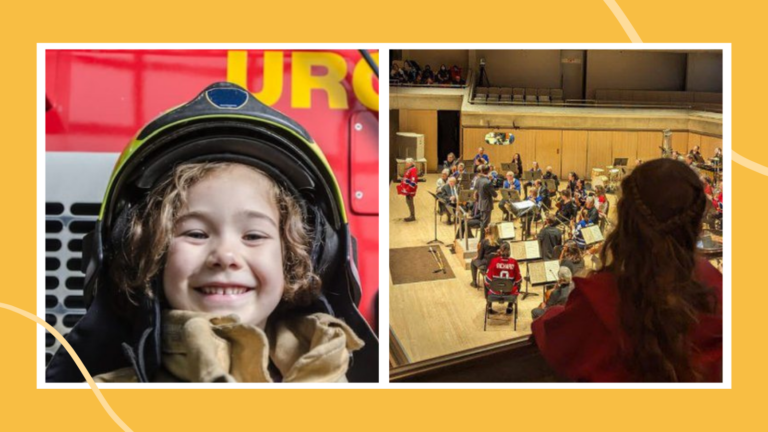
260+ Field Trip Ideas for Grades Pre-K Through 12 (In-Person and Virtual)
Get out of the classroom and explore the world! Continue Reading
Copyright © 2023. All rights reserved. 5335 Gate Parkway, Jacksonville, FL 32256
JavaScript seems to be disabled in your browser. For the best experience on our site, be sure to turn on Javascript in your browser.
We use cookies for performance, analytics and marketing. By using this site, you agree to our use of cookies. For more information, view our Privacy Policy .
- Request a Catalog
- Create New Customer
- Create New School Account

# Type at least 3 character to search # Hit enter to search
- Blogs about homeschooling
Homeschool Field Trips 101: How to Make the Day Count

- May 6, 2022

Are you one of those homeschoolers who watches dolphins at the zoo and calls it school? Here's a secret: Sometimes we all are.
Do field trips have a place on your homeschool calendar year? Are you on the fence about taking the time away from your books? Here are facts to get you off that fence and on that field trip.
Home educators spend plenty of time on the mastery of their core curriculum— much more than educators at traditional public and private schools .
Getting out of the house to see history and touch science not only adds to your studies, but it also checks that pesky socialization box .
Field trips are not an intrusion if they are part of your curriculum.
How do you make that outside-of-the-books field trip time really count? Although the term field trip has become a euphemism for a day off from learning , I don’t find that true at all. My adult children still talk about the connections they made between seeing history on our various homeschool field trips and then later reading about it in their curriculum.
There are two ways to get around feeling guilty about taking a day off from your books. I’m giving you permission from the high council of homeschoolers to adopt either method of making your homeschool field trips count.
Two Ways To Plan Homeschool Field Trips
1. the wing it method.
The first is easiest. Just decide that the schedule and programs are not going to be the boss of you. In other words, wing it.
Be impulsive! Wake up one day and surprise everyone with a day out.
Be comfortable knowing you may do Tuesday's work on Wednesday.
Don't worry about fitting anything that you are reading or studying. Just choose a topic or location that seems fun.
Even your youngest students will be thrilled about making a connection to a book they've read.
If you encounter something from a different point in history, you'll get that pay off in years to come when they look up from reading and tell you how they saw that in the museum last year. As Susan Wise Bauer says,” Your goal is to supply mental pegs on which later information can be hung.”
2. The Curriculum Supplement Method
The second way to plan homeschool field trips is more suited to the Type A personalities. If you are a box checker this is for you!
Pull out your Instructor's Guide (IG) and open to the Scope and Sequence page.
Open up a few browser tabs with websites of local museums and zoos.
Take a look at both the temporary and permanent exhibits for topics in your syllabus.
No matter what level you are studying, you are almost guaranteed to find something applicable to your homeschool.
Pencil the locations into your IG, and when you get to that week, you've already got a relevant field trip idea on tap!
No matter what kind of planner you are, my point is just this: Don’t let the Instructor’s Guide rule the year. Any kind of home education is a full-time job. You are already a hero for taking it on. The guide is just that; it’s not your boss.
Before the Visit: What to Bring for a Happy Homeschool Field Trip

The outside pocket contains pens, pencils, and a couple of small notebooks for drawing, notes, or games.
Kleenex and wet wipes are always handy to have on hand.
I carry snacks that do not melt— gum and granola bars for example.
Keep a stash of dollar bills for souvenirs and the Mold-A-Rama machine if you are lucky enough to find one!
Back in the day, I had four kids all under the age of ten. I can tell you from experience that any field trip will require an entire day off from school . It doesn't matter if you drive or take public transportation. It still takes all day and most of your patience.
Try not to wake or leave the house any earlier than you normally would. If that means you leave mid-morning, that is okay. The last thing you want is to begin the day stressed as you rush out the door.
During the Visit: Know When to Stop
The old adage "always leave them wanting more" is true. Dont' try to do it all, and leave before the day goes sideways.
Each kid gets a map and chooses one "must see" item.
Take turns navigating through the place.
Don’t be afraid to let your kids ask questions (or not). Museum and zoo folks love eager vistors. They don’t work there only for the money!
Bringing schoolwork? No. Just don't. There is no point in bringing teens with you if they sit on a bench, reading literature or doing algebra problems.
Keep the visit short—less than four hours unless you have all teens. If anyone seems overtired, unengaged, or is almost crying, it is absolutely time to go.
After the Visit: Reflect and Investigate
Sit down and regroup before you leave. Ask
what they did and didn’t like
what would they like to see next time
what they saw that they want to learn more about
Encourage them to think about how they can find the answers to their questions. That ends the visit on a high note, and before you know it, you’ll be motivated to plan the next day of field trip learning!

About the Author

Posted in Homeschooling
- Homeschooling
- Middle School
- High School
Privacy notice
Why field trips matter, share this article.
- Facebook Icon: Facebook
- Twitter Logo: Twitter
- LinkedIn Logo: LinkedIn
- Email Icon: Email
A new study shows visiting an art museum improves critical thinking skills and more. An excerpt from “The Educational Value of Field Trips,” originally published in Education Next , Winter 2014.
This article originally appeared in the January/February 2014 issue of Museum magazine .
The school field trip has a long history in American public education. For decades, students have piled into yellow buses to visit a variety of cultural institutions, including art, natural history and science museums, as well as theaters, zoos, and historical sites. Schools gladly endured the expense and disruption of providing field trips because they saw these experiences as central to their educational mission: schools exist not only to provide economically useful skills in numeracy and literacy but also to produce civilized young men and women who would appreciate the arts and culture. More advantaged families may take their children to these cultural institutions outside of school hours, but less-advantaged students are less likely to have these experiences if schools do not provide them. With field trips, public schools viewed themselves as the great equalizer in terms of access to our cultural heritage.
Today, culturally enriching field trips are in decline. Museums across the country report a steep drop in school tours. For example, the Field Museum in Chicago at one time welcomed more than 300,000 students every year. Recently the number is below 200,000. Between 2002 and 2007, Cincinnati arts organizations saw a 30 percent decrease in student attendance. A survey by the American Association of School Administrators found that more than half of schools eliminated planned field trips in 2010-11.
The decision to reduce culturally enriching field trips reflects a variety of factors. Financial pressures force schools to make difficult decisions about how to allocate scarce resources, and field trips are increasingly seen as an unnecessary frill. Greater focus on raising student performance on math and reading standardized tests may also lead schools to cut field trips. Some schools believe that student time would be better spent in the classroom preparing for the exams. When schools do organize field trips, they are increasingly choosing to take students on trips to reward them for working hard to improve their test scores rather than to provide cultural enrichment. Schools take students to amusement parks, sporting events and movie theaters instead of to museums and historical sites.
If schools are de-emphasizing culturally enriching field trips, has anything been lost as a result? Surprisingly, we have relatively little rigorous evidence about how field trips affect students. The research presented here is the first large-scale randomized control trial designed to measure what students learn from school tours of an art museum.
We find that students learn quite a lot. In particular, enriching field trips contribute to the development of students into civilized young men and women who possess more knowledge about art, have stronger critical-thinking skills, exhibit increased historical empathy, display higher levels of tolerance, and have a greater taste for consuming art and culture.
Design of the Study and School Tours
The 2011 opening of the Crystal Bridges Museum of American Art in Northwest Arkansas created the opportunity for this study. Crystal Bridges is the first major art museum to be built in the United States in the last four decades, with more than 50,000 square feet of gallery space and an endowment in excess of $800 million. Portions of the museum’s endowment are devoted to covering all of the expenses associated with school tours. Crystal Bridges reimburses schools for the cost of buses, provides free admission and lunch, and even pays for the cost of substitute teachers to cover for teachers who accompany students on the tour.
Because the tour is completely free to schools, and because Crystal Bridges was built in an area that never previously had an art museum, there was high demand for school tours. Not all school groups could be accommodated right away. So our research team worked with the staff at Crystal Bridges to assign spots for school tours by lottery. During the first two semesters of the school tour program, the museum received 525 applications from school groups representing 38,347 students in kindergarten through grade 12. We created matched pairs among the applicant groups based on similarity in grade level and other demographic factors. An ideal and common matched pair would be adjacent grades in the same school. We then randomly ordered the matched pairs to determine scheduling prioritization. Within each pair, we randomly assigned which applicant would be in the treatment group and receive a tour that semester and which would be in the control group and have its tour deferred.
We administered surveys to 10,912 students and 489 teachers at 123 different schools for three weeks, on average, after the treatment group received its tour. The student surveys included multiple items assessing knowledge about art as well as measures of historical empathy, tolerance and sustained interest in visiting art museums.
We also assessed students’ critical thinking skills by asking them to write a short essay in response to a painting that they had not previously seen. Finally, we collected a behavioral measure of interest in art consumption by providing all students with a coded coupon good for free family admission to a special exhibit at the museum to see whether the field trip increased the likelihood of students making future visits.
The intervention we studied is a modest one. Students received a one-hour tour of the museum in which they typically viewed and discussed five paintings. Some students were free to roam the museum following their formal tour, but the entire experience usually involved less than half a day. The discussion of each painting during the tour was largely student-directed, with the museum educators facilitating the discourse and providing commentary beyond the names of the work and the artist and a brief description only when students requested it.
Recalling Tour Details. Our research suggests that students retain a great deal of factual information from their tours. Students who received a tour of the museum were able to recall details about the paintings they had seen at very high rates. For example, 88 percent of the students who saw the Eastman Johnson painting “At the Camp-Spinning Yams and Whittling” knew when surveyed weeks later that the painting depicts abolitionists making maple syrup to undermine the sugar industry, which relied on slave labor. Similarly, 82 percent of those who saw Norman Rockwell’s “Rosie the Riveter” could recall that the painting emphasizes the importance of women entering the workforce during World War II. Among students who saw Thomas Hart Benton’s “Ploughing It Under,” 79 percent recollected that it is a depiction of a farmer destroying his crops as part of a Depression-era price support program. And 70 percent of the students who saw Romare Bearden’s “Sacrifice” could remember that it is part of the Harlem Renaissance art movement. Since there was no guarantee that these facts would be raised in student-directed discussions, and because students had no particular reason for remembering these details (there was no test or grade associated with the tours), it is impressive that they could recall historical and sociological information at such high rates.
These results suggest that art could be an important tool for effectively conveying traditional academic content, but this analysis cannot prove it. The control-group performance was hardly better than chance in identifying factual information about these paintings, but they never had the opportunity to learn the material. The high rate of recall of factual information by students who toured the museum demonstrates that the tours made an impression. The students could remember important details about what they saw and discussed.
Critical Thinking. Beyond recalling the details of their tour, did a visit to an art museum have a significant effect on students? Our study demonstrates that it did. For example, students randomly assigned to receive a school tour of Crystal Bridges later displayed demonstrably stronger ability to think critically about art than the control group.
During the first semester of the study, we showed all 3rd- through 12th-grade students a painting they had not previously seen, Bo Bartlett’s “The Box.” We then asked students to write short essays in response to two questions: What do you think is going on in this painting? And, what do you see that makes you think that? These are standard prompts used by museum educators to spark discussion during school tours. We stripped the essays of all identifying information and had two coders rate the compositions using a seven-item rubric for measuring critical thinking that was developed by researchers at the Isabella Stewart Gardner Museum in Boston.
We express the impact of a school tour of Crystal Bridges on critical thinking skills in terms of standard deviation effect sizes. Overall, we find that students assigned by lottery to a tour of the museum improve their ability to think critically about art by 9 percent of a standard deviation relative to the control group. The benefit for disadvantaged groups is considerably larger.
A large amount of the gain in critical thinking skills stems from an increase in the number of observations that students made in their essays. Students who went on a tour became more observant, noticing and describing more details in an image. Being observant and paying attention to detail is an important and highly useful skill that students learn when they study and discuss works of art.
Historical Empathy. Tours of art museums also affect students’ values. Visiting an art museum exposes students to a diversity of ideas, peoples, places and time periods. That broadening experience imparts greater appreciation and understanding. We see the effects in significantly higher historical empathy and tolerance measures among students randomly assigned to a school tour of Crystal Bridges.
Historical empathy is the ability to understand and appreciate what life was like for people who lived in a different time and place. This is a central purpose of teaching history, as it provides students with a clearer perspective about their own time and place. To measure historical empathy, we included three statements on the survey with which students could express their level of agreement or disagreement: 1) I have a good understanding of how early Americans thought and felt; 2) I can imagine what life was like for people 100 years ago; and 3) When looking at a painting that shows people, I try to imagine what those people a thinking. We combined these items into a scale measuring historical empathy.
Students who went on a tour of Crystal Bridges experience a 6 percent of a standard deviation increase in historical empathy. Among rural students, the benefit is much larger, a 15 percent of a standard deviation gain. The fact that Crystal Bridges features art from different periods in American history may have helped produce these gains in historical empathy.
Tolerance. To measure tolerance, we included four statements on the survey with which students could express their level of agreement or disagreement: 1) People who disagree with my point of view bother me; 2) Artists whose work is critical of America should not be allowed to have their work shown in art museums; 3) I appreciate hearing views different from my own; and 4) I think people can have different opinions about the same thing. We combined these items into a scale measuring the general effect of the tour on tolerance.
Overall, receiving a school tour of an art museum increases student tolerance by 7 percent of a standard deviation. As with critical thinking, the benefits are much larger for students in disadvantaged groups. Rural students who visited Crystal Bridges experience a 13 percent of a standard deviation improvement in tolerance. For students at high-poverty schools, the benefit is 9 percent of a standard deviation.
Interest in Art Museums. Perhaps the most important outcome of a school tour is whether it cultivates an interest among students in returning to cultural institutions in the future. If visiting a museum helps improve critical thinking, historical empathy, tolerance and other outcomes not measured in this study, then those benefits would compound for students if they were more likely to frequent similar cultural institutions throughout their life. The direct effects of a single visit are necessarily modest and may not persist, but if school tours help students become regular museum visitors, they may enjoy a lifetime of enhanced critical thinking, tolerance and historical empathy.
We measured how school tours of Crystal Bridges develop in students an interest in visiting art museums in two ways: with survey items and a behavioral measure. Interest in visiting art museums among students who toured the museum is 8 percent of a standard deviation higher than that in the randomized control group. Among rural students, the increase is much larger: 22 percent of a standard deviation. Students at high-poverty schools score 11 percent of a standard deviation higher on the cultural consumer scale if they were randomly assigned to tour the museum. And minority students gain 10 percent of a standard deviation in their desire to be art consumers.
We also measured whether students are more likely to visit Crystal Bridges in the future if they received a school tour. All students who participated in the study during the first semester, including those who did not receive a tour, were provided with a coupon that gave them and their families free entry to a special exhibit at Crystal Bridges. The coupons were coded so that we could determine the applicant group to which students belonged. Students had as long as six months after receipt of the coupon to use it.
We collected all redeemed coupons and were able to calculate how many adults and youths were admitted. Though students in the treatment group received 49 percent of all coupons that were distributed, 58 percent of the people admitted to the special exhibit with those coupons came from the treatment group. In other words, the families of students who received a tour were 18 percent more likely to return to the museum than we would expect if their rate of coupon use was the same as their share of distributed coupons.
This is particularly impressive given that the treatment-group students had recently visited the museum. Their desire to visit a museum might have been satiated, while the control group might have been curious to visit Crystal Bridges for the first time. Despite having recently been to the museum, students who received a school tour came back at higher rates. Receiving a school tour cultivates a taste for visiting art museums, and perhaps for sharing the experience with others.
Disadvantaged Students
One consistent pattern in our results is that the benefits of a school tour are generally much larger for students from less-advantaged backgrounds. Students from rural areas and high-poverty schools, as well as minority students, typically show gains that are two to three times larger than those of the total sample. Disadvantaged students assigned by lottery to receive a school tour of an art museum make exceptionally large gains in critical thinking, historical empathy, tolerance and becoming art consumers.
It appears that the less prior exposure to culturally enriching experiences students have, the larger the benefit of receiving a school tour of a museum. We have some direct measures to support this explanation. To isolate the effect of the first time visiting the museum, we truncated our sample to include only control-group students who had never visited Crystal Bridges and treatment-group students who had visited for the first time during their tour. The effect for this first visit is roughly twice as large as that for the overall sample, just as it is for disadvantaged students.
When we examine effects for subgroups of advantaged students, we typically find much smaller or null effects. Students from large towns and low-poverty schools experience few significant gains from their school tour of an art museum. If schools do not provide culturally enriching experiences for these students, their families are likely to have the inclination and ability to provide those experiences on their own. But the families of disadvantaged students are less likely to substitute their own efforts when schools do not offer culturally enriching experiences. Disadvantaged students need their schools to take them on enriching field trips if they are likely to have these experiences at all.
Policy Implications
School field trips to cultural institutions have notable benefits. Students randomly assigned to receive a school tour of an art museum experience improvements in their knowledge of and ability to think critically about art, display stronger historical empathy, develop higher tolerance, and are more likely to visit such cultural institutions as art museums in the future. If schools cut field trips or switch to “reward” trips that visit less-enriching destinations, then these important educational opportunities are lost. It is particularly important that schools serving disadvantaged students provide culturally enriching held trip experiences.
This first-ever, large-scale, random-assignment experiment of the effects of school tours of an art museum should help inform the thinking of school administrators, educators, policymakers and philanthropists. Policymakers should consider these results when deciding whether schools have sufficient resources and appropriate policy guidance to take their students on tours of cultural institutions. School administrators should give thought to these results when deciding whether to use their resources and time for these tours. And philanthropists should weigh these results when deciding whether to build and maintain these cultural institutions with quality educational programs. We don’t just want our children to acquire work skills from their education; we also want them to develop into civilized people Students tour the galleries at the Crystal Bridges Museum of American Art. who appreciate the breadth of human accomplishments. The school field trip is an important tool for meeting this goal.
Jay P. Greene is professor of education reform at the University of Arkansas, Fayetteville, where Brian Kisida is a senior research associate. Daniel H. Bowen is a postdoctoral fellow at Rice University’s Ki nder Institute, Houston, Texas. Anne Kraybill, school and community programs manager at Crystal Bridges Museum of American Art, oversaw the development and implementation of the school tours. To read the full report, go to http // educationnext.org/the-educational-value·of- field-trips/
AAM Member-Only Content
AAM Members get exclusive access to premium digital content including:
- Featured articles from Museum magazine
- Access to more than 1,500 resource listings from the Resource Center
- Tools, reports, and templates for equipping your work in museums
- Not a member? Join Now
- Learn more about AAM Membership
We're Sorry
Your current membership level does not allow you to access this content.
- Learn More about AAM Membership
Upcoming Events

Future of Museums Summit
Leave a reply cancel reply.
Your email address will not be published. Required fields are marked *
Latest Stories from AAM

Consensual Curation and Our Common Future
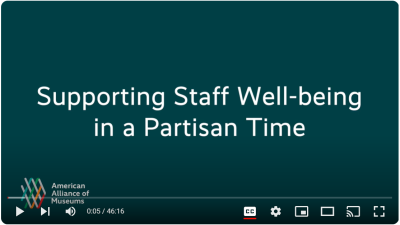
Supporting Staff Well-being in a Partisan Time

The Longevity Strategy Designing Sustainable Digital Content

When Robots Learn to be Creative, What Happens to Informal Learning
Subscribe to field notes.
Packed with stories and insights for museum people, Field Notes is delivered to your inbox every Monday. Once you've completed the form below, confirm your subscription in the email sent to you.
If you are a current AAM member, please sign-up using the email address associated with your account.
Primary Role Archivist/Librarian Board Chair (unpaid) Community Outreach/External Relations Conservation Consultant/Independent Professional Curatorial Development Educator: College/University Educator: Museum Exhibitions Facility/Operations Finance & Accounting Former Director/CEO General Administrative Staff Government Agency Staff Government Relations HR IT/Web Legal Living Collections Care Membership Museum Events/Food Service Museum Store Museum Trustee Museum Volunteer Other Museum Function Other Non-Museum Function President/CEO/Executive Director Public Relations & Marketing Publications Registration/Collections Management Research: Audience Evaluation Research: Discipline Based Retired Museum Staff Security Senior Management/VP/COO/CFO/Division Director Student: Museum-Related Student: Other Visitor Services Volunteer Management
Are you a museum professional? Yes No
Are you a current AAM member? Yes No
Success! Now check your email to confirm your subscription, and please add [email protected] to your safe sender list.

Field Trip Safety 101: Tips to Keep Kids Safe

Apple-picking, aquariums, and museums, oh my!
These are just a few of the many field trips that some students are fortunate enough to go on.
Designed to be enriching and educational, field trips offer students many benefits and unique opportunities. They can also pose potential dangers and risks.
From bus crashes and negligent security to trips and falls, accidents happen. Once students exit the building or campus, who’s liable for their injuries?
Here we’ll cover field trip safety to help prevent these incidents and offer helpful information to protect both you and your students when the unexpected happens.
Most Common Field Trip Accidents and Injuries
Knowledge is power when it comes to preventing school trip accidents and injuries.
Understanding where danger lies can help ensure personal safety and keep students safe.
Bus Accidents
In 2019 alone, 109 people were killed in school bus-related accidents . Another 13,000 people were injured.
While these statistics include both bus passengers and other motorists, the potential for accidents is still present.
Motor vehicle accidents, in general, can be a cause of death among young adults. While you can’t prevent every accident or control the negligence of other drivers, you can protect students by doing your due diligence.
Bus accidents can be caused by drowsy, distracted, or intoxicated drivers. Be sure to perform adequate background checks on all drivers transporting students.
Dangerous Environments
Depending on where the field trip is held, there can be many dangers on-premises.
Sports games, hiking trails, and amusement parks all carry a certain level of risk for students. Even seemingly innocent environments like museums and theaters can still pose danger.
Students may be at risk of falling from high areas, having objects fall on them, or tripping. Preventing these types of accidents comes with a certain level of personal responsibility, but adult chaperones should be on the lookout for all potential hazards.
Insufficient Security Measures
Most public establishments that welcome field trips offer a certain level of security on site.
Whether it’s a security guard, camera system, or bag checks at the door, all of these measures help protect students against outside dangers.
In addition to monitoring the safety of students, lack of security equipment and barriers can create potential threats. Missing or inadequate barriers and warning signs, as well as damaged equipment, put unsuspecting students at risk.
Field Trip Accident Prevention
Accidents happen — and although you can’t prevent them, you can take preventative measures to reduce risk and protect student safety and your best interests.
Appoint Qualified Staff
Not just any chaperone will do. Allocate experienced, knowledgeable staff members based on the type of field trip.
For example, if the trip involves swimming, only send staff members who are confident swimmers or have previous lifeguard training. Outdoor enthusiasts might be the perfect choice for a hiking or camping field trip.
The same goes for hired staff. If students are transported by bus, perform a detailed background check on both the bus company and its drivers to ensure student safety.
Practice Bus Safety
Since a majority of field trip accidents occur en route, bus safety is a top priority.
Ensure that all students remain seated and wear their seatbelts for the entire ride. Go over safety rules and behavioral expectations.
Students that are too loud, stand up or walk around the bus while it’s in motion pose a threat to passengers. This behavior also distracts the driver, increasing the risk of an accident.
Get to Know the Area
Whether students are going to a museum, park, or outdoor area, all chaperones, staff, and students should familiarize themselves with the environment and posted safety guidelines.
Avoid restricted or unsafe areas. Make sure students stay together and each group has an appointed chaperone.
Alert teachers, supervisors, and students of any potential dangers and safety hazards.
When Accidents Happen, Who’s to Blame?
There’s no cut and dry answer to who’s at fault for an accident or injury during a field trip. Several factors come into play including whether or not the event was truly an accident or caused by negligence on the part of the teachers or school district.
Most school districts have measures in place that help protect students even when they’re taken off-campus as part of a school trip.
Things like signed permission slips, clearly defined rules, and precautionary measures help ensure the safety of students and protect school districts from being sued.
Before a decision about who’s at fault is made, several factors must be considered. These include, but aren’t limited to:
- Did the supervisor take appropriate action to protect the children?
- Did the danger or accident directly result in the student’s injury?
- Was the student actually injured and if so, how extensively?
- Was lack of supervision a factor?
With so many underlying questions and concerns, every field trip accident and injury should be handled differently.
In the event of an accident, be sure to remain calm. This will help keep the student calm and comfortable.
Administer appropriate first-aid or call someone who can. Notify the parents as soon as possible and wait for a full investigation before admitting blame or taking responsibility for the incident.
The beauty of our insurance is that regardless of what happened, out-of-pocket medical expenses are covered. Now, you can worry less about legalities and costs and focus more on student safety and wellbeing.
Reasons to Purchase Accident and Health Insurance
Purchasing accident and health insurance is another preventative measure you can take to help protect not only your school but your students.
In the event that a student is seriously injured during a field trip, your insurance can pay to make them whole again.
A willingness to pay and make the student whole again is a sign of good faith and could prevent an unwanted lawsuit. Preventing lawsuits and having proper coverage in place is another way to help protect your reputation. It also shows both students and parents that you’re invested in their safety and wellbeing.
General liability coverage with a competitive supplemental option will cover most costs associated with student injuries, both on- and off-campus.
Give Students the Safe, Positive Experience They Deserve
A field trip offers both students and teachers a rare opportunity to learn, grow, and experience outside the four walls of the classroom.
These hands-on encounters will leave a lasting impression on students.
Unfortunately, an accident or injury can do the same.
Help prevent these incidents by being aware of your surroundings, educating students on personal safety, and offering compensation when appropriate.
At pomi, we offer peace of mind insurance so that you can focus on what matters — the students!
Get the coverage you need to provide a safe, enriching environment with confidence.
These posts are for informational purposes only and should not be considered as specific financial, legal or tax advice. Depending on your individual circumstances, the strategies discussed in this post may not be appropriate for your situation. Always consult your legal or tax professionals for specific information regarding your individual situation. In providing such information, Great American does not warrant that all potential hazards or conditions have been evaluated or can be controlled. The liability of Great American Insurance Company is limited to the terms, limits and conditions of the insurance policies underwritten. Policies are underwritten by Great American Insurance Company, an authorized insurer in all 50 states and the DC. Coverage features and product availability may vary by state. © 2023 Great American Insurance Company, 301 E. Fourth St., Cincinnati, OH 45202. All rights reserved. Please see Great American Insurance Company’s Legal Disclosures/Terms and Conditions here. https://www.greatamericaninsurancegroup.com/contact/legal-disclosures
Follow us and share your stories
Connect with us.
Questions? Want to learn more? Connect with real people at pomi to learn all the ways we can help.
The Hechinger Report
Covering Innovation & Inequality in Education
Are field trips a good way to spend school district funds? Kids say ‘yes’

Share this:
- Click to share on LinkedIn (Opens in new window)
- Click to share on Pinterest (Opens in new window)
- Click to share on Reddit (Opens in new window)
- Click to share on WhatsApp (Opens in new window)
- Click to email a link to a friend (Opens in new window)
The Hechinger Report is a national nonprofit newsroom that reports on one topic: education. Sign up for our weekly newsletters to get stories like this delivered directly to your inbox. Consider supporting our stories and becoming a member today.
Get important education news and analysis delivered straight to your inbox
- Weekly Update
- Future of Learning
- Higher Education
- Early Childhood
- Proof Points

VALLEJO, CALIF. — Taking 175 sixth-graders on two forms of transportation, then leading them on a one mile walk through San Francisco to a downtown science museum is no small task. But it’s one teacher Linda Holt may be doing far more regularly in the coming years. That’s because her school district, in Vallejo, Calif., made the decision last summer to allocate more money to field trips over the next several school years.

The decision comes as a result of California’s new school funding rules, which eliminated many of the traditional earmarks on state funding and handed the privilege, and the challenge, of allocating funds to the districts. Known as the “Local Control Funding Formula,” the new rules require that district leaders make funding decisions only after asking for input from teachers, parents and students.
Vallejo Superintendent Ramona Bishop took that directive very seriously for her 15,500-student district. In addition to collecting surveys from a quarter of the student body, which is about a third black, a third Latino and 18 percent Filipino, she set up small-group meetings at the middle and high schools.
“They really were articulate,” Bishop said of the students she met with. “I think I was underestimating my students. I hate to say that as a superintendent.”
“More disadvantaged students have less opportunities to be exposed to cultural activities so they really need the school to do it for them.”
The idea to spend more money on field trips — students also asked for new textbooks, yummier lunches and more afterschool activities — came from students at the district’s alternative high school.
“It was all about, ‘take us places where you take your kids, Dr. Bishop,’” she said. Students listed museums, college campuses and military bases as examples of where they might want to go.
Jake Howland, 17, attends Vallejo’s alternative John W. Finney High School. He said school officials usually don’t ask what students think “because they don’t want to hear about the problems. But if your school’s not all the way it should be, there are problems that you could make clear,” he said.
Though Jake was at last year’s meeting with Bishop, he didn’t remember field trips coming up. Neither did Tiffany Dotson, 17, who was at last year’s meeting as well. Tiffany said she’d only been on one field trip — to the California Hall of Sciences in San Francisco — during her years in Vallejo’s public schools. But she recalled it vividly.
“Probably it would have helped me,” stay out of trouble to go on more field trips, Tiffany said. “I’m a hands-on learner.”
Related: California’s new school funding system stumbles into its first year
Whether they remembered suggesting it or not, the students’ field trip idea now appears on page 29 of the 41-page plan that outlines how the Vallejo City Unified School District will spend its money for this school year through the 2016-17 school year. Common Core-aligned materials, art supplies, science supplies, library improvements, and several staff positions are among the other new items in the district’s $124 million budget. Field trips in grades 4 to 12 claimed $120,000 of the budget this school year. By 2016-17, there will be $360,000 available to grades K to 12, enough for every child in the district to attend at least one field trip.
“They don’t want to hear about the problems. But if your school’s not all the way it should be, there are problems that you could make clear.”
The new money was doled out to schools in September, said Mitch Romao, who oversees the district’s funding plan under the state’s new local control laws. Once the school year starts, it’s mostly up to teachers to decide where to take their students on field trips , Romao said. The district does provide some guidelines: Fourth- and fifth-graders should see colleges or universities, middle school students are meant to learn more about art or science on their trips and high school students should visit places that teach them about their chosen academy’s area of focus.
“As far as I know, every school is using as much of the money as possible,” Romao said. “We’re not quite sure if they’re going to use it all or if they’ll need a couple dollars more.”
As transportation is the most expensive part of any trip, Romao said district officials calculated the field trip budget based on the cost of bus rentals, which he said run around $600 for a day’s excursion
And that’s how, after 15 years of teaching at Franklin Middle School and not once taking a single student on a field trip to the Exploratorium, a science museum in nearby San Francisco, Holt found herself supervising the loading of three buses full of museum-bound 11- and 12-year-olds.
“Just let it be fun,” prayed Ra’ven Powell, 12, as she waited to board the bus to the subway station. Today’s trip would be only her second to a museum, she said, after the time she went to a dinosaur museum with her grandma. Ra’ven was expecting to see “stuff from the 1970s or something.”

On the second leg of the 90-minute journey, a group of boys clinging to a subway pole were similarly unsure of what they would see. Slime, squids, emeralds, fossils, skeletons, rocks and candy all made the hoped-for list.
Some of the confusion was probably due to the infrequency with which these students, 88 percent of whom qualify for free or reduced lunch, go on such trips. According to their teachers, most don’t come from families that can afford to spend much time in museums.
$360,000 — Amount teachers in Vallejo City Unified School District will have to spend on field trips in 2016-17, triple what they have this school year and up from $0 earmarked in the district budget last year.
But some of the confusion was generated by the school. The museum tickets — free to Franklin’s students — had originally been secured for the eighth-graders. When Holt heard a few weeks before the trip that her sixth-graders would be going instead, she was thrilled, but overwhelmed. She went to find the school’s activity director.
“I go ask all the questions,” Holt said. “When you ask all the questions, you get all the jobs.”
But not all the details. No one had told Holt the district money was meant to cover a bus tide all the way into the city. Consequently, Holt reserved buses just to take her students to the subway station and bought subway tickets with money earned from the sixth-grade dance. Between handling all of that and requesting parent chaperones, Holt also erroneously told some of her students that they would be going to the Tech Museum rather than the Exploratorium. They were never going to the Tech Museum, which is in San Jose, but the error meant that several students still didn’t know where they were going on the day of the trip.
Nevertheless, they all seemed happy to be going somewhere .
Field trips, as measured by student visits to museums, fell sharply during the recession. A third of districts nationally cut field trips entirely during the 2010-11 school year, according to an American Association of School Administrators survey .
Schools in California were particularly hard hit by the recession. The state plunged to 50 th in per student spending in 2010-11 , according to Education Week’s rankings. An informal poll of a half dozen California museums found that field trip attendance dropped universally in the 2009-10 and 2010-11 school years.
The Natural History Museum of Los Angeles County, for example, experienced a field trip attendance decline from 137,671 students* in the 2007-08 school year to just 98,176 in 2009-10. Attendance has come back up at most museums, including the Natural History Museum, which had rebounded to 131,292 field trip visitors by the 2013-14 school year. In part, that’s because districts like Vallejo have begun loosening their belts. It’s also because museums like the Exploratorium have increased programs that offer free admission for students from low-income schools, like Franklin.
Amid increased pressures on schools to produce top test scores, Molly Porter, manager of school and teacher programs for the Natural History Museum and the Page Museum, worries many will decide to forgo out-of-school field trips.
“It’s expensive and it does take (time) out of the class day, but it is instructional time and it is valuable,” Porter said. “I hope that we can be seen as a vital component of a well-rounded formal education experience.”

It’s unclear at this point how many other California districts will allocate a portion of the money they receive from the new school funding formula to field trips. For one thing, not all districts will get the same amount of extra money. For another, district needs vary widely. Training on the Common Core State Standards, expanding community engagement efforts and purchasing materials have ranked high on many district plans for how to spend the new money, according to an analysis by the state’s Legislative Analyst’s Office . Many district plans are also unclear, overly ambitious or lacking specifics, according to the January 2015 report.
Related: School librarians a rare find in California public schools
Jay P. Greene, a professor in the school of education at the University of Arkansas, is one of only a few academics to have examined the vitality of field trips. He and his colleagues took advantage of the 2011 opening of the Crystal Bridges Museum of American Art, in Arkansas, to conduct a study on the effects of a visit to the museum .
In cooperation with the university, Crystal Bridges staff issued field trip dates to 123 schools that had expressed interest in taking a total of 11,000 students to the museum. Half of the schools made the trip in the fall and the second half traveled in the spring. All students and staff were admitted for free.
Students who attended the fall field trip scored higher than their peers who had not yet made the trip on measures of critical thinking, tolerance and interest in visiting a museum again. Students from low-income backgrounds and those from rural areas benefitted the most, Greene said.
“More disadvantaged students have less opportunity to be exposed to cultural activities so they really need the school to do it for them,” he said. “I suspect that the quality of the experience is incredibly important.”
An ideal trip, the Natural History Museum’s Porter said, would include a preparatory visit by the lead teacher, logistical and academic preparation for students and chaperones, and a clear introduction to the exhibits by museum staff. There should also be clear academic goals for students during the visit, like writing observations of the exhibits in a notebook.
Almost none of this preparation happened as part of the Franklin Middle School trip to the Exploratorium. And because it took so long to get there, students only had an hour and 15 minutes to explore the exhibits, less than half the time they spent traveling to and from the museum.

Upon walking into the vast warehouse that now houses the Exploratorium, students scattered to play with hands-on exhibits that ranged from shooting a basketball while wearing glasses with slanted prisms for lenses to experimenting with shadows in a room lined with light-sensitive vinyl.
Taivon Wilson, one of the students, pushed a button in front of a screen and watched an extreme slow-motion playback of himself waving and clapping. He said he didn’t know how it worked, but he tried moving slowly, then quickly, to see what the camera recorded depending on his speed. Jasmine Capili, 11, and two classmates listened at tubes that were supposed to separate specific sound waves from the rest. Jasmine said she didn’t know what the tubes were supposed to do. Then, to everyone’s delight, a boy started tapping out a song on the various tubes, playing it like a xylophone.
In another part of the museum, Brenda Hernandez, 12, and Mariana Cruz, 11, worked at a table covered in wheels and elastic bands. They were making an elaborate pulley system meant to spin a wheel with an umbrella on it and make the umbrella flare out. They figured out that using tighter bands worked better if they wanted the umbrella to spin fast.
Soon, it was time to go.
Related: Will ‘creative’ and ‘hands on’ summer school foster a love of learning?
A week after the trip, Holt listed nearly every item on Porter’s list, without prompting, as something she would like to do in preparation for her next trip.
“If we could prepare them for the activity so they know what they’re going to see, it would be better,” Holt said. “We didn’t have a lot of info [this year]. I think we could have done a much better job at getting the kids ready.”
“It was all about, ‘take us places where you take your kids, Dr. Bishop.’”
Back on the bus, returning to school, there was a fart-noise making contest in the back. In the front, two boys sat glumly by a teacher in anticipation of getting suspended for jumping the subway turnstiles when they couldn’t get their subway tickets to work. And asked if they’d learned anything, most students shrugged and returned their attention to their smart phones and each other.
It was not abundantly clear that the trip had been a success. Certainly, no one was excitedly explaining how she’d just had an insight into how sound waves work; nor going on about the properties of simple pulleys; nor plotting the invention of an improved slow-motion camera
Then, Greene said specific new knowledge is only one part of what students get out of a field trip. The other part, much harder to measure, is greater cultural awareness and broader horizons.
Jake, the student from the alternative high school, had a similar reason for thinking field trips were important.
“If we were going to go on a field trip they should probably be to places where it’s showing us what’s beyond school,” he said. “Once you’re done in school, there’s still a whole other lane you need to move into and I feel like they need to bring that into people’s vision.”
Though Holt considered her inaugural Exploratorium trip to be an overall success, she said she’s determined that her students will have a much improved field trip experience next year. Thanks to the input of students like Tiffany and Jake, she will have that chance. And so will her students.
This story was written by The Hechinger Report , a nonprofit, independent news organization focused on inequality and innovation in education. Read more about California schools.
*Correction: The field trip attendance numbers listed for the Natural History Museum of Los Angeles County only include students.
Related articles
The Hechinger Report provides in-depth, fact-based, unbiased reporting on education that is free to all readers. But that doesn't mean it's free to produce. Our work keeps educators and the public informed about pressing issues at schools and on campuses throughout the country. We tell the whole story, even when the details are inconvenient. Help us keep doing that.
Join us today.
Lillian Mongeau
Lillian... More by Lillian Mongeau
Letters to the Editor
At The Hechinger Report, we publish thoughtful letters from readers that contribute to the ongoing discussion about the education topics we cover. Please read our guidelines for more information. We will not consider letters that do not contain a full name and valid email address. You may submit news tips or ideas here without a full name, but not letters.
By submitting your name, you grant us permission to publish it with your letter. We will never publish your email address. You must fill out all fields to submit a letter.
Your email address will not be published. Required fields are marked *
Save my name, email, and website in this browser for the next time I comment.
Sign me up for the newsletter!
You are using an out of date browser. It may not display this or other websites correctly. You should upgrade or use an alternative browser .
Field trips--how many per schoolyear?
Discussion in ' Homeschooling ' started by angelheart , Sep 13, 2007 .
angelheart New Member
What's the minimum number of field trips you do per schoolyear, on average? I'm just curious lol. And what do you consider a field trip? Can going to the library or book store count, LOL?
Advertisement
Actressdancer new member.
Imo, anytime I take my child to a location specifically to learn something, that's a 'field trip'. If I take him to the park to learn about ducks, that counts. If I take him grocery shopping and we talk about all the ins and outs of commerce, pricing math, and employees, that counts. Then again, my son is 5, so it's all new 'material' for him. How many? At least one a week. I want him to learn that he can learn anywhere in the world that he wants to.
frogguruami New Member
I don't count bookstore or library. If I did we would do two field trips a week easy!! LOL We do one a month at least. Usually related to the science or social studies topic we are doing. AM
Actressdancer said: ↑ Imo, anytime I take my child to a location specifically to learn something, that's a 'field trip'. Click to expand...
becky New Member
We had three our first week. We live between our police station and our town office, and we started ss with The Constitution/ rules/laws/etc. Personally, I wouldn't say the library is a field trip because we're there too much. The only time I did count that was when we were there for a private tour, during a community helper unit.
BTW- Jeannie got fingerprinted while we were at the police station. I hope I NEVER see that done for real.
sloan127 Active Member
Becky, I saw a tape from the sheriff's office where my son was going down a dirt road in his truck and wouldn't stop for the deputy. Finally my son stops and bails out and runs. They turned the police dog loose on him and the dog took him down in a matter of seconds. Thankfully my son was helping make a training tape and he worked for the sheriff at the time. But it still was pretty hard to watch. Beth
Lol- I know what you mean. They also put her in the holding cell and locked it. I held my breath for a few seconds, hoping I wasn't seeing the future..
Ohio Mom New Member
Now that's a field trip. Every teenage should go on a field trip like that, Becky. Today, we took a field trip - letterboxing - I thought we were going to have some nice hikes in the woods - We decided we did - 1. Math 2. History 3. Science 4. Letters 5. Physical Education I'm sure there is more subjects.
the sneaky mama New Member
We go at least twice a month--usually more. (That doesn't include the library, store, etc.)
KrisRV New Member
hmmmm thats a hard question it depends on what we are studying and whats in the area to go to help with studies, some times it seems we are going on a field trip all the time other times we are home alot..
teensmom New Member
Trip to the dump Well, it was really the recycling center! But it was great, very educational and the folks there were glad to show it off. Just call ahead and get an appointment.
homeschooler06 Active Member
Well we have one at least once a week until I leave for IN in November. The last week of September I am gone just about everyday and it's also fair week. It's the joy of home schooling being able to go here and there.
Just a side note. . .but related. . . One of the things I often tell people I don't know when they ask why I would want to homeschool is that I really feel like my kids would miss out on all the great educational opportunities afforded by living here if they were in school all day! LOL In fact, today we're going to the Met! :love:
missinseattle New Member
I don't keep track. We probably average 2 or 3 a month though. We had our first one last week. Going on another next week.
MonkeyMamma New Member
I don't really keep track either. I'd say usually once a month sometimes more but it just depends. We take field trips based on what we are learning about but we also take field trips just for the heck of it. They don't have to pertain to what we are learning. We did Texas History last year and took a ton of field trips. Well in a few weeks we are going on a trip pertaining to Texas History again just because it is close and fun.
vantage Active Member
We probably average about 1 special trip a month. If we go to the park to learn about ducks and the park is a park we normally attend, I consider that a value added homeschool activity. If we take a special block of time and effort to attend a concert, museum, or specific topic related site, like a fort, I consider that a field trip. There are many old forts in our area to visit, as well as plantations, national and state parts and other such places. I hope to get by several over the next few months before we relocate to another state. Most are good visits for both history, ecology, and geology.
Deena New Member
the sneaky mama said: ↑ One of the things I often tell people I don't know when they ask why I would want to homeschool is that I really feel like my kids would miss out on all the great educational opportunities afforded by living here if they were in school all day! LOL Click to expand...
seekingmyLord Active Member
I would like to do at least one a month, and did with my last homeschool group, but I just joined another bigger one and the choices are not as appealing for us so far.
WOW! All of you are doing so much! I feel bad though, because I don't think we'll be able to do more than one field trip a month...and that's if we're lucky. But I do hope to make the most of the few we do get, at least...make "every moment count" when we do get out there. I wish I could do more though, but we're just not in the position. Is it unfair to my kids if I can't manage as many field trips as other homeschoolers? Although I only went on a handful of field trips per YEAR when I was a kid in public school. So my kids will probably get more than I did.
Share This Page
Members online now.
- Search titles only
Separate names with a comma.
- Search this thread only
- Display results as threads
Useful Searches
- Recent Posts
- Gear & Toys
- Preschooler
- Older Child
- Adult Child
12 & 13 Year Olds in a Hotel Room Without Adult Supervision in the Room
Would you allow your son or daughter to attend a school field trip and stay in a hotel room without Adult supervision in the room? The kids will all be spread out through out the hotel and chaperone/teachers will be spread through out the hotel. There will be 4 kids to each room. The rooms will be set up where a group of girls might be directly across the hall from a room of boys. These are middle school kids. I would love to hear your thoughts. Thanks.
What can I do next?
- Add your Answer own comment
- Ask your own question Add Question
- Join the Mamapedia community Mamapedia
Report This
- Share this with your friends
- Write Message C.P. C.P. a private message
- Read more More from that C.P. has written C.P.
- Browse local questions Questions
Featured Answers
Already have. My son went to a state track meet and the kids stayed in rooms together, 4 to a room, no adults in the room. There were adult chaperones (I went but didn't chaperone) on each floor. There were no problems, other than that some of the boys brought xboxes and they stayed up half the night playing. They didn't do to well at the meet, lol. Same son (7th grade) is going on a 5 day trip with his school in May, I'm excited about it.
If it's a school sponsored trip, they've already thought of everything. They probably tape doors (like someone said) and they may even sleep in shifts and walk the hallways. Taking other peoples' kids on an overnight trip is a HUGE responsibility...one, I would hope, teachers and schools do not take lightly.
I grew up in FL and the 5th graders to go DC for a safety patrol trip. I went in '88 and my nieces went in '12 and '15. Parents are not allowed to go and kids are put 4 to a room. They've been doing this for almost 30 years.
More Answers
I recall going to such an event when I was in Jr. High. 8th grade, as I recall. Me and 3 girl friends stayed in a room. The chaperone's put tape outside our doors when it was time to be in our rooms for the night. Clearly, if you left your room it would be obvious since you can not retape from the inside. Whether they actually did this I don't know, as I was too scared to find out. Your parents would be called, and if there was a boys room who was also untaped it would be obvious what happened. I believe the chaperones also took shifts to walk the halls through the night to see who was untaped.
Is your school doing something like this? If not, you may want to suggest it.
We thought we were so cool because there was some free time at meal time and we decided instead of the food they had provided, we went across the street for the much better White Castle. That disgusting burger eaten with my friends and my money of our own free will was a meal I remember.
We stayed up way too late and had a great time. I remember thinking we were so grown up and independent. I remember one girl had the new Dirty Dancing cassette to listen to on her Walkman and she shared it with us on the bus ride!
If your child is one who will break the rules with no regard to the consequences, then maybe they can not be trusted for such a trip.
This is how every overnight school field trip my son (12yr old) has been on worked (and he has been on many), and it was how it worked when I was a kid. It would be impossible to have an adult in every room. The cost would skyrocket with all the additional hotel rooms that would be needed and there would need to be a whole other bus for the chaperones (if they could find that many chaperones)! I think many parents would have more issues having strange adults sleeping with their kids. The kids have to check in with chaperones at certain times, they have to check in if leaving the hotel to go shopping or to restaurants and check back in. and nobody is permitted to leave their room after lights out. We haven't had a problem.
ETA: I've never heard of "taping" them into their rooms, but then again the trips they go on are pretty busy (ie skiing for 8 hours followed by swimming for 2 hours), and they are too tired to want to go sneaking around after lights out!
My son is going on tour for a week out of province this spring and I am really excited for him. I do trust him though.
ETA: I just asked my son and he says they do tape the doors.
One thing I'd like to add is that people really underestimate the educators who chaperone these middle school trips. The people who spend all day with your kids at school know the dynamics of the kids and exactly who they need to watch most closely, who seems to like who, who would want to sneak out to see who... people seem to forget that part. As an educator in grades 7/8, we are VERY clued in to what is up among the students. So it is not a bunch of clueless bozos saying "g'night kiddos!" and tucking into their rooms for the night leaving the young'uns to their own devices...
I have never heard of taping the doors, that is genius. I remember staying in our own little tent cabins in 8th grade in Yosemite and it would have been pretty easy to arrange a rendeszvous in the middle of the night, and just be "on your way to the bathroom" if anyone got caught. But everyone was so wiped out from activities we crashed. I think that is the usual for school trips.
When my children were in school, they went on a number of trips, both school trips (band trips in High School), and church trips throughout middle and high school.
The way it was handled with the band trips at motels was that at a certain time (curfew was known well in advance), the chaperones made sure the correct students were in their correct rooms, and then put tape across the outside of the door. Students were not allowed out of their rooms after a certain time.
The doors were checked early in the morning. If any doors had tape that was torn or disturbed, those students were at risk of being sent back at their parent's expense. I think they also had the adults work as hall monitors throughout the night.
For church trips, my kids went on the church-sponsored ski trips throughout youth group. The kids knew well in advance that the bedrooms were NOT supposed to have both boys and girls in them... as our youth leader said, 'We have pink rooms, and blue rooms....we do NOT have purple rooms.' That seemed to work fine with our church.
Yes, it would be best if you could have a adult in each room, but that really isn't feasible..... I doubt you could get enough adults to volunteer to help on a trip like that.
Anyway, yes I would let my children go on a trip like that. I had good trust in my children, in both middle school and in high school.
My daughter is going on such a trip with other 8th graders. The teachers told us that they put tape across the door after the kids have retired to their room at the time the teachers have set. The teachers will know if any of the rooms were opened during the night.
We are fine with our daughter going and she is sharing a room with girls that we like and trust.
Speak to the teachers with your concerns.
Yep, just like the other moms said. We went o many trips through school, out of town. 7th grade through 12th. We attended Spanish club conventions (PASF) in San Antonio and also were expected to meet up at the Convention Center at certain times for meetings,workshops and programs. , then free for lunch and meet back at the center for afternoon gatherings.. then we were free for dinner and meet back at the hotel by a certain time. Rooms were checked, doors taped and in the mornings we would meet for a morning meeting, then start all over again.
Cheerleading camps, choir trips, band competitions..
You know your children best. If they tend to follow directions, have common sense and can handle their behaviors in public, then you can decide if they can attend.
Honestly never had a problem.
Yes. Typically that means there is a curfew and the kids are taped in or otherwise accounted for. If you think your child is not trustworthy enough to follow those protocols, don't send him/her. I went on several field trips like that in middle and HS and there was never an issue. On several trips, we were run ragged in activities til late, and then by the time we got to our rooms, we crashed quickly.
My SS went on a few overnights with his football or wrestling teams with a similar setup, and went on a 3 or 4 day band trip. SD did not travel with her school.
Any trip my oldest DD has been on, they have done the same as previous posters have stated with the tape across the door. Chaperones are not permitted to stay in the same room as students unless they are all related. This rule is not just our school's rule. My DD is going to a national convention for her business class and it is stated in the handbook that students and advisors are not permitted to stay in the same room. So unless you want to go on the trip and stay in the room with only your child, there is no way to have an adult in the room.
Of course. All three of my kids went on a school sponsored trip to DC in 7th grade. They stayed in a hotel room 3 nights with their chosen roommates only, a chaperone/teacher down the hall without event. In all the years the district has been going, there has never been an incident.
Also, for many out of town sporting events, they roomed with teammates, at a younger age then that, also without incident.
I work in a school and have chaperoned overnight field trips. Ours are typically the way you mentioned with 3-4 kids to a room. Ours are usually set-up through a tour company & the tour company provides additional chaperones (in addition to those from the school.) The tour company chaperones are positioned on each floor and monitor the hallways through the night & also handle taping the outside door of each room.
The school personnel & a few parents provide all the adult supervision during the day hours of the field trip while the tour company chaperones assume responsibility for the night-time hallways. You might want to check with your school to see if it's a similar set-up.
ETA: The students are all warned that school personnel are always the ones "in charge" and if there are any problems at all, the tour company reps. will be contacting the school personnel.
my kids did several camps and trips where they stayed in rooms with other kids, and no adults directly in the room. they had a blast, and it was fine. but my kids were generally good kids, and the trips i sent 'em on were well-planned and had a degree of oversight with which i was happy. and i was happy for my kids to have some degree of freedom, and to hang out with their friends without a stern adult eye on 'em at all times. this does not seem to be the case today. in your situation it seems fine on the surface. i'd need to know a bit more about it if this were me IRL, such as how well we knew the roommates, and what the schedule looked like. but i wouldn't rule it out simply because there's not an adult sleeping in the same room. khairete S.
I helped chaperone a field trip for a group of middle schoolers. Each room had an adult sleeping in each room. We were a small group of 45 including chaperones. Ib would ask the teacher (s) organizing the trip specific questions and decide llbased on their answers and the maturity of your child.
For the trip for which I volunteered, I was a bit anxious so I volunteered. My experience on that trip relieved my anxiety. Because I saw the concern and planning involved I would let my daughter go without me. I suggest that by talking with the lead planner you will have an ideasier of how trustworthy the teacher and the plan is. A positive for me was knowing the school and staff thru the times I was at the school on other occasionsm
When it daughter was in high school she was often in a hotel room with the cheer squad. No adult was in the room with them.
They were expected to have good behavior because that reflected the school ( and parents). The rooms were always in 1 area and the coaches were nearby.
If someone went wild or got out if hand with enjoying this freedom, they lost the privilege to cheer.
I let my daughter go on one to Washington and NY in 8th grade. It was great. They had security in the hallways all night. They were with the teachers all day. I'm so glad that she got the opportunity to go!
I went on a lot of school overnight trips and the tape on the door was used every time. However, on one trip, we had to get an additional room last minute and three of us girls ended up in that room. The room had a door on the inside to the next room...of boys. So the outside doors got taped, but the chaperones weren't aware of the inside door. We opened it up and hung out since we knew the guys next door. Nothing happened, but the possibility was there.
I was a chaperone on trips like this with my daughter's middle school. We did split the girls and boys on different floors. We had two moms responsible for several rooms and we were right in the middle of the ones we supervised. We also had teachers there who knew what kids might be trouble and what to look out for. We didn't go to bed early though. We made sure they were in their rooms. And we listened for trouble and did spot checks on the ones the teachers were concerned about. We never had a problem.
Depends on the kids, the chaperones, and the length of the trip and what the schedule looks like.
I went on an overnight field trip with my daughter last year, for the very reason you are concerned about. There would be girls in a room with no chaperone. Turns out, they would have been fine, but I didn't know that beforehand. It was a very small group, 2 boys, 2 girls, and the adult teacher/chaperone. The boys had a room across the hall from the teacher (who had his own room), the girls were the room 2 down from the teacher (so no adjoining wall). The teacher put an indicator outside the boys' room so he would know if they exited their room after hours. They were out late (it was a band trip and they had 8 hours or practice time on day 1, split into 3 time periods, 2 early, one late one after dinner). When we returned to the hotel, everyone was tired, and was expected up and ready to go early in the morning for the early morning rehearsals. My daughter's roomate was a very mature and responsible young lady. One of the kids that you see leading everything.. President of Jr. Beta, this club, that club, fall sport, winter sport, spring sport, top scores on tests, most volunteer hours, etc.
Daughter is very much like this other young lady. They would have been just fine.
But, it was a very small group. A large group would make things more complicated. 4 kids to a room could be fine... if the kids are responsible kids. No one ever has to go anywhere alone, and no one would be able to do anything that someone else didn't know about. But, if they were all "in on it"...
no and no..a hotel room full of un or under supervised pre teen kids is a recipe for disaster..especially if there are going to be any boy under the age of 90 around..either go with your daughter to chaperone, or simply say, sorry, but..no..unless you want to risk your kid coming home with a "surprise" or vd..K. h.
No, I would not allow this. Kids that have freedom this young might make bad choices and they could be hurt.
I'd rather encourage the planning committee to select sleeping quarters in a place where they had cabins that held larger groups and then an adult and a group of girls or a group of boys could be in one building.
Related Questions
Middle school trip chaperone drama https://www.mamapedia.com/article/middle-school-trip-chaperone-drama, 8th grade son wants to go to washington dc trip with middle school....i'm scared https://www.mamapedia.com/article/8th-grade-son-wants-to-go-to-washington-dc-trip-with-middle-schoolim-scared, 7th grade trip to nyc - dilemma & advice https://www.mamapedia.com/article/7th-grade-trip-to-nyc-dilemma-and-advice, 4th grade field trip out of town 3 days... and all parents can't come https://www.mamapedia.com/article/4th-grade-field-trip-out-of-town-3-days-and-all-parents-cant-come, first long distance field trip https://www.mamapedia.com/article/first-long-distance-field-trip, lost a child on a school field trip https://www.mamapedia.com/article/lost-a-child-on-a-school-field-trip, traveling with people to people https://www.mamapedia.com/article/traveling-with-people-to-people, learn from moms like you, get answers, tips, deals, and amazing advice from other moms..

IMAGES
COMMENTS
1,885. Aug 3, 2009. Usually one per term (3 per year). However, we do need to be very aware of how much money we are asking parents for (limit of about $75/year), so if we have in-school performances, etc. we may need to cut back on out-of-school trips. MrsC, Aug 3, 2009.
Here's why field trips are important. The study found that regardless of gender, ethnicity or socioeconomic status, children who take school trips have better grades (59%), higher graduation rates from high school (95%) and college (63%) and greater income (12% higher annually). In fact, 89% said educational trips had a positive, lasting ...
For example, the Field Museum in Chicago at one time welcomed more than 300,000 students every year. Recently the number is below 200,000. Between 2002 and 2007, Cincinnati arts organizations saw a 30 percent decrease in student attendance.
In the study, researchers assigned more than 1,000 fourth- and fifth-grade students in Atlanta to two groups. One group participated in three to six "culturally-enriching" field trips—visits to an art museum, a live theater performance, and a symphony concert—while students in the control group stayed put in class.
If each core subject area (ELA, math science, or social studies) offers one field trip during a school year, students would be out of the building for four days. School attendance policies may count these as excused absences, but any field trip that removes students from class reduces the number of classroom hours.
One of the reasons why we can do as many field trips each year is that we have a science center membership ($65 for the year) which has reciprocal privleges at the ASTC science centers; a children's museum membership ($125 for the year) which has reciprocal privleges at ACM children's museums. Many of the other museums we go to (history ...
Plan Your Schedule. Arrange Your Supervision. Create a Permission Form. Decide Who's Allowed To Go. Tie in Your Field Trip to Your Curriculum. These are the steps you will need to cover for your field trip plan. The order of these steps may be different for you, but be sure to think about all of these points. 1.
Elementary School Field Trip Ideas. @mjdstoronto. These are the prime field trip years! Here are our favorite trips for every grade. 14 Kindergarten Field Trips (Virtual and In-Person) 15 First Grade Field Trips (Virtual and In-Person) 15 Second Grade Field Trips (Virtual and In-Person) 15 Third Grade Field Trips (Virtual and In-Person)
On average, each year across more than 400 parks in all 50 states and U.S. territories, the National Park Service hosts more than 60,000 in-park and distance learning education programs, serving over 1.8 million students. ... The new survey reveals that 77% of U.S. adults favor expanding national park field trips, classroom activities, and ...
In the 2008-09 school year, ... and finds that attending a school with at least 0.25 trips per student increased 8 th grade scores by 0.026 standard deviations (SD). The odds of a student passing ...
Subject-Focused Field Trips. Each month of the year could have a different subject focus. If September's focus subject is science, you might schedule a trip to the airport or take a special STEM class. If October's focus subject is history, you might visit an interpretive history festival or a nearby history museum. ...
Kids love to look at the moon and stars. A visit to a planetarium is the perfect introduction to the solar system. Second graders can take in a show and try to identify constellations. 10. A Fish Hatchery. A trip to the fish hatchery is a great way to learn about the life cycle of a fish, fish anatomy, and water quality.
Two Ways To Plan Homeschool Field Trips. 1. The Wing It Method. The first is easiest. Just decide that the schedule and programs are not going to be the boss of you. In other words, wing it. Be impulsive! Wake up one day and surprise everyone with a day out. Be comfortable knowing you may do Tuesday's work on Wednesday.
But they go to separate schools. One to public school and the other to the school for the blind. And at the school for the blind the kids go on zero field trips and at the public school the kids go on 2 per year. I'm curious how many field trips your class usually goes on per year. I'd love if you can tell me: how many field trips per year?
Americans take 1.1 billion trips a day — four for every person in the U.S; U.S. daily travel averages 11 billion miles a day — almost 40 miles per person per day; HOW MANY TRIPS WE TAKE IN A YEAR. Americans take 411 billion daily trips a year or about 1,500 trips per person; U.S. daily travel totals about 4 trillion miles — 14,500 miles ...
1-2 days each tacked on to president/labor/memorial day for a 4-5 day trips around US-Mexico-Canada (or Europe if you're on East coast). Take 3-4 days off with Thanksgiving, and 3-4 days off with Christmas for 10-12 day trip to asia or southern hemisphere. 4-5 days off woth 4thJuly or Labor or Memorial for Europe trip.
With field trips, public schools viewed themselves as the great equalizer in terms of access to our cultural heritage. Today, culturally enriching field trips are in decline. Museums across the country report a steep drop in school tours. For example, the Field Museum in Chicago at one time welcomed more than 300,000 students every year.
Since a majority of field trip accidents occur en route, bus safety is a top priority. Ensure that all students remain seated and wear their seatbelts for the entire ride. Go over safety rules and behavioral expectations. Students that are too loud, stand up or walk around the bus while it's in motion pose a threat to passengers.
An informal poll of a half dozen California museums found that field trip attendance dropped universally in the 2009-10 and 2010-11 school years. The Natural History Museum of Los Angeles County, for example, experienced a field trip attendance decline from 137,671 students* in the 2007-08 school year to just 98,176 in 2009-10.
Now, after nearly 20 years in my field and 9 years at the same company, I have built up my vacation time to enough that I can sometimes manage 2 trips per year. ... Two big trips per year, 3-6 mini weekend trips (this is not including any holiday travels/family time). I've realized the max travel time I can personally take per trip is 10 days ...
Chaperones on your school's trips can prevent students from wandering off, control student behavior, and provide backup during emergencies. Some state or local laws or venues set minimum chaperone-to-student ratios and these should be reviewed during trip planning. When ratios aren't mandated, determine the appropriate number of chaperones ...
2. We probably average about 1 special trip a month. If we go to the park to learn about ducks and the park is a park we normally attend, I consider that a value added homeschool activity. If we take a special block of time and effort to attend a concert, museum, or specific topic related site, like a fort, I consider that a field trip.
Would you allow your son or daughter to attend a school field trip and stay in a hotel room without Adult supervision in the room? The kids will all be spread out through out the hotel and chaperone/teachers will be spread through out the hotel. There will be 4 kids to each room. The rooms will be set up where a group of girls might be directly ...